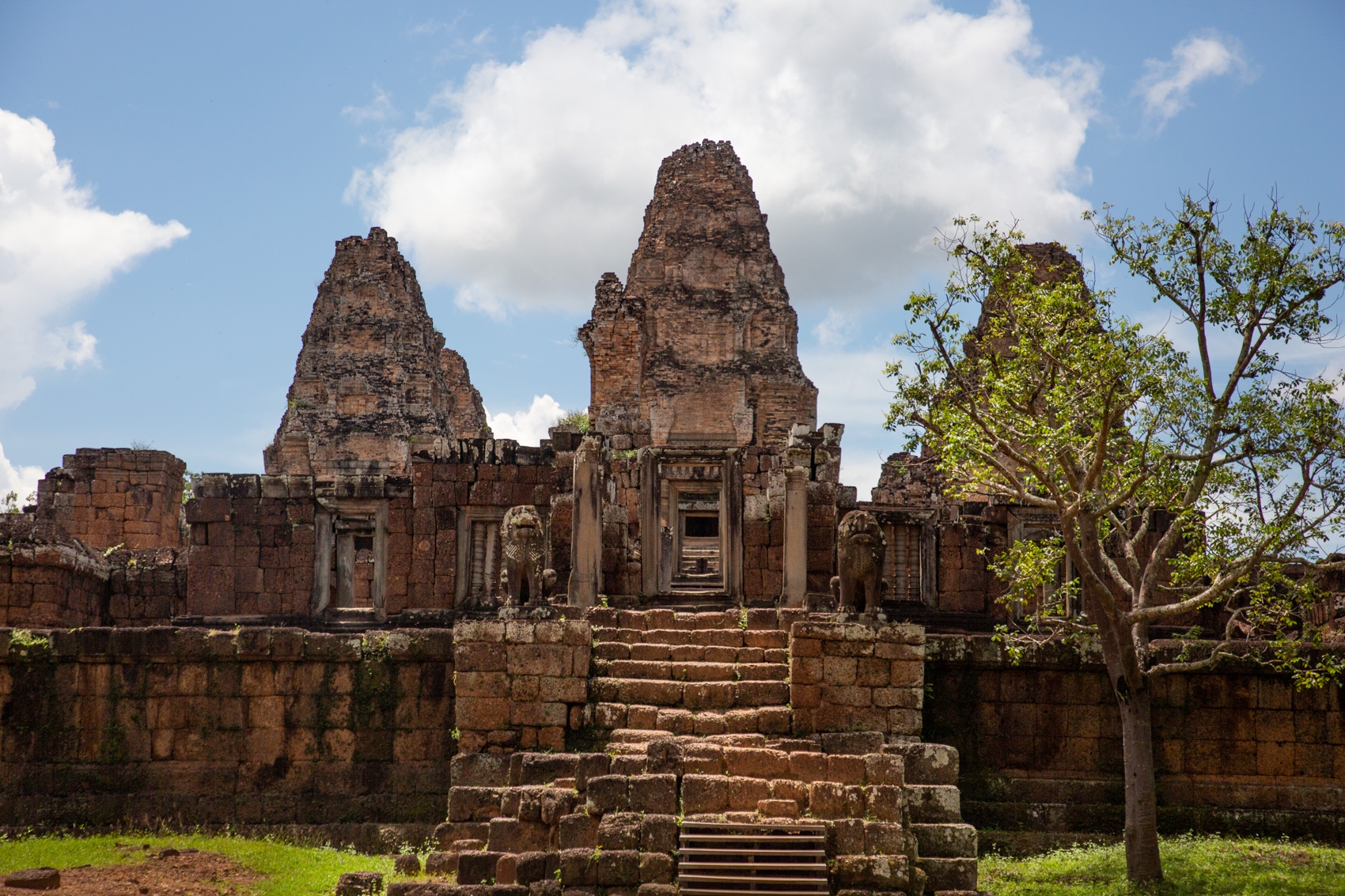- Area: Siem Reap Province > Krong Siem Reab > Sangkat Nokor Thum > Preah Dak Village
- | Type: Ancient Remains & Temples
The East Mebon (Khmer: ប្រាសាទមេបុណ្យខាងកើត) is a 10th Century temple built during the reign of King Rajendravarman (reign 944 to 968 AD) at the center of the massive reservoir, Yasodharatataka Baray. Known as the East Baray today, it has been dry for many centuries, but in its day, this temple would have been an island reached only by boat, whose reflections shimmered on the water from afar.
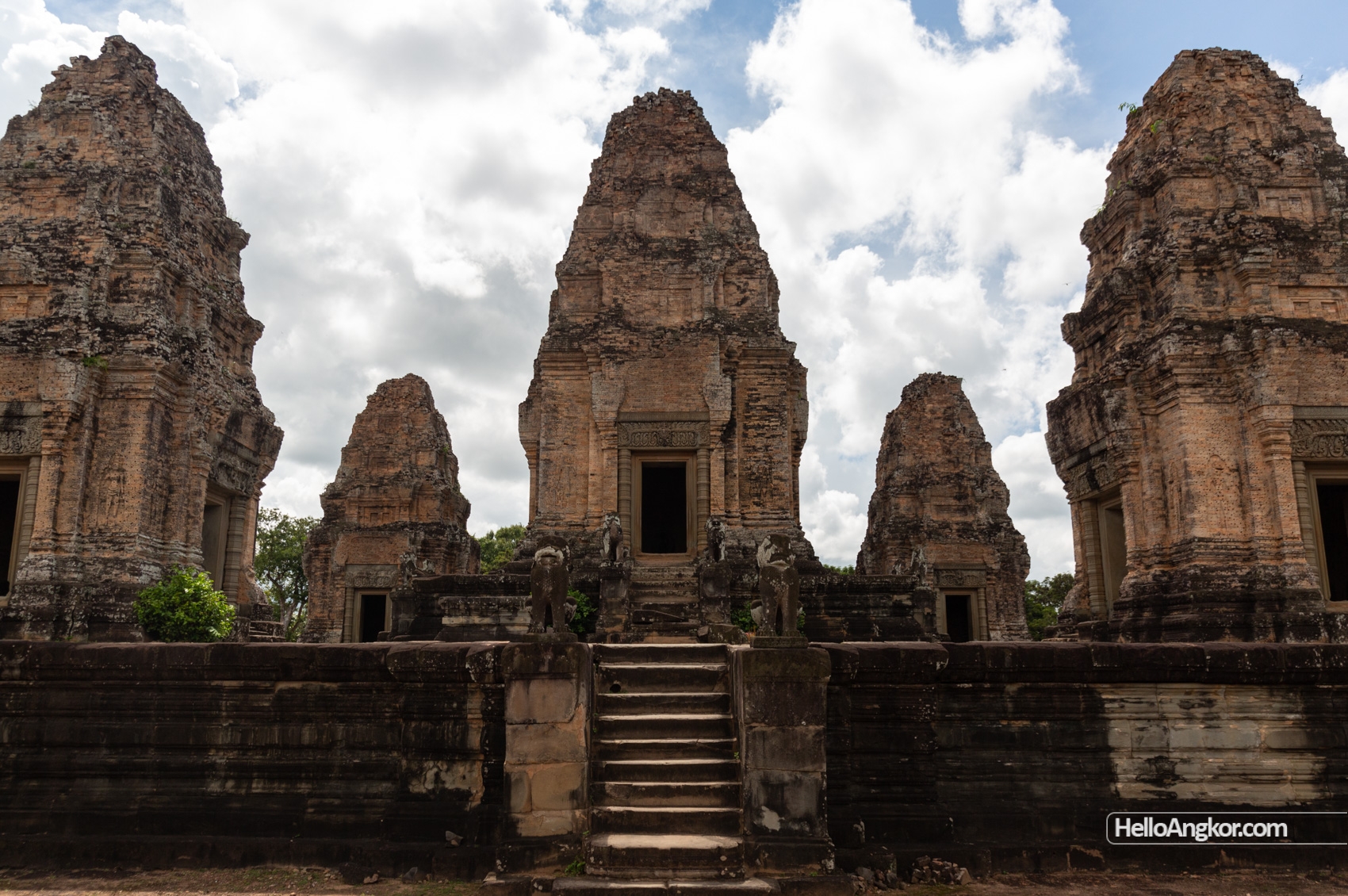
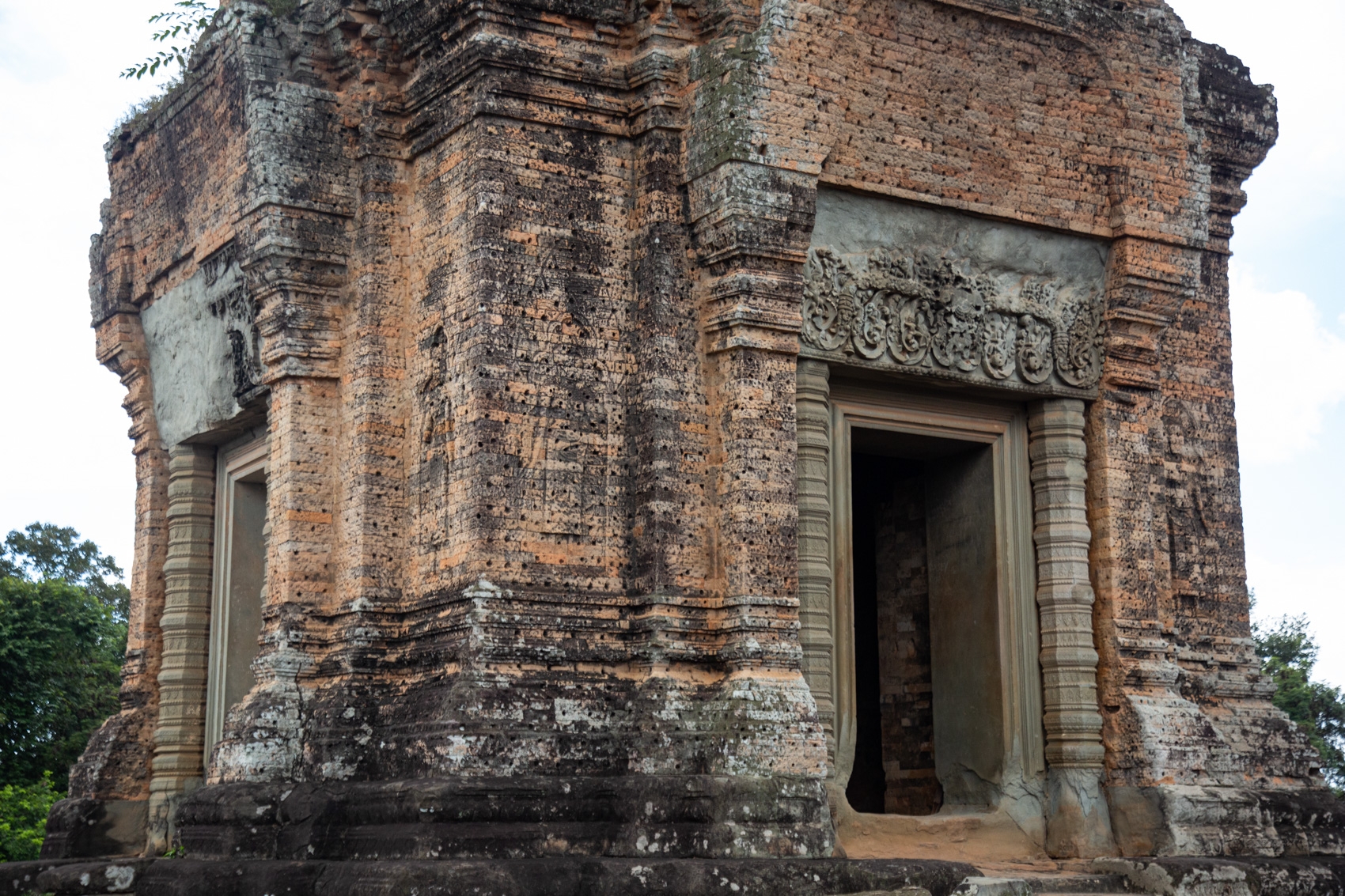
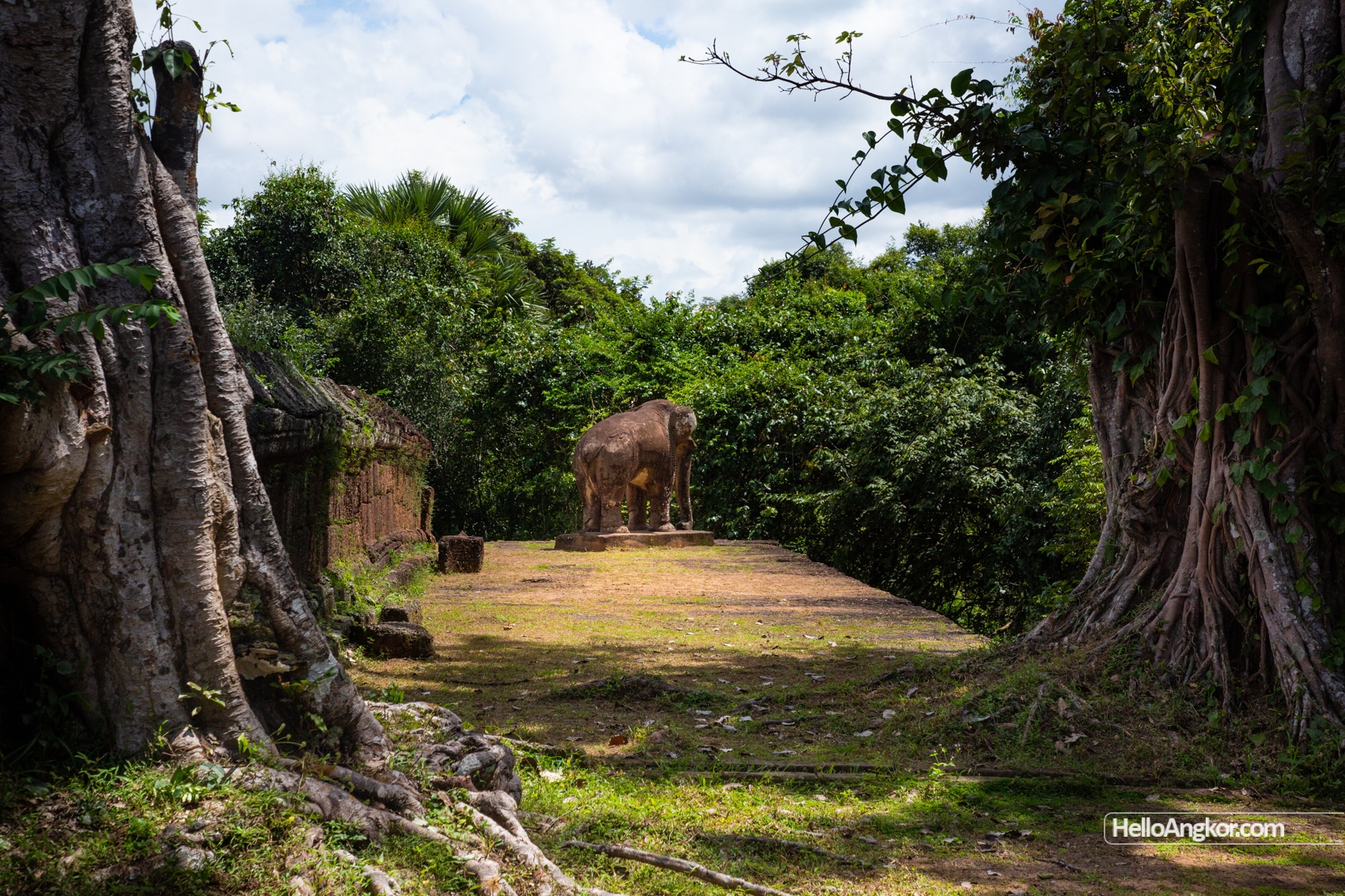
Visiting East Mebon
East Mebon is an easy temple to visit with it being near the roadway and only a small number of steps to ascend the levels while offering several wonderful highlights. Highlights include beautiful stone elephants and lions, plus an amazing array of unique and well-preserved/restored lintels.
The temple is open from 7:30 am to 5:30 pm and you can spend 40 minutes here or more, especially if you want to focus on the different unique lintels. There are drink stalls and food stalls opposite the temple entry. Entry is included in the Angkor Pass and this temple is on the Grand Circuit.
The Lions and Elephants – both of which are very fine examples, with lions flanking the entrances and elephants at the corner of each tier.
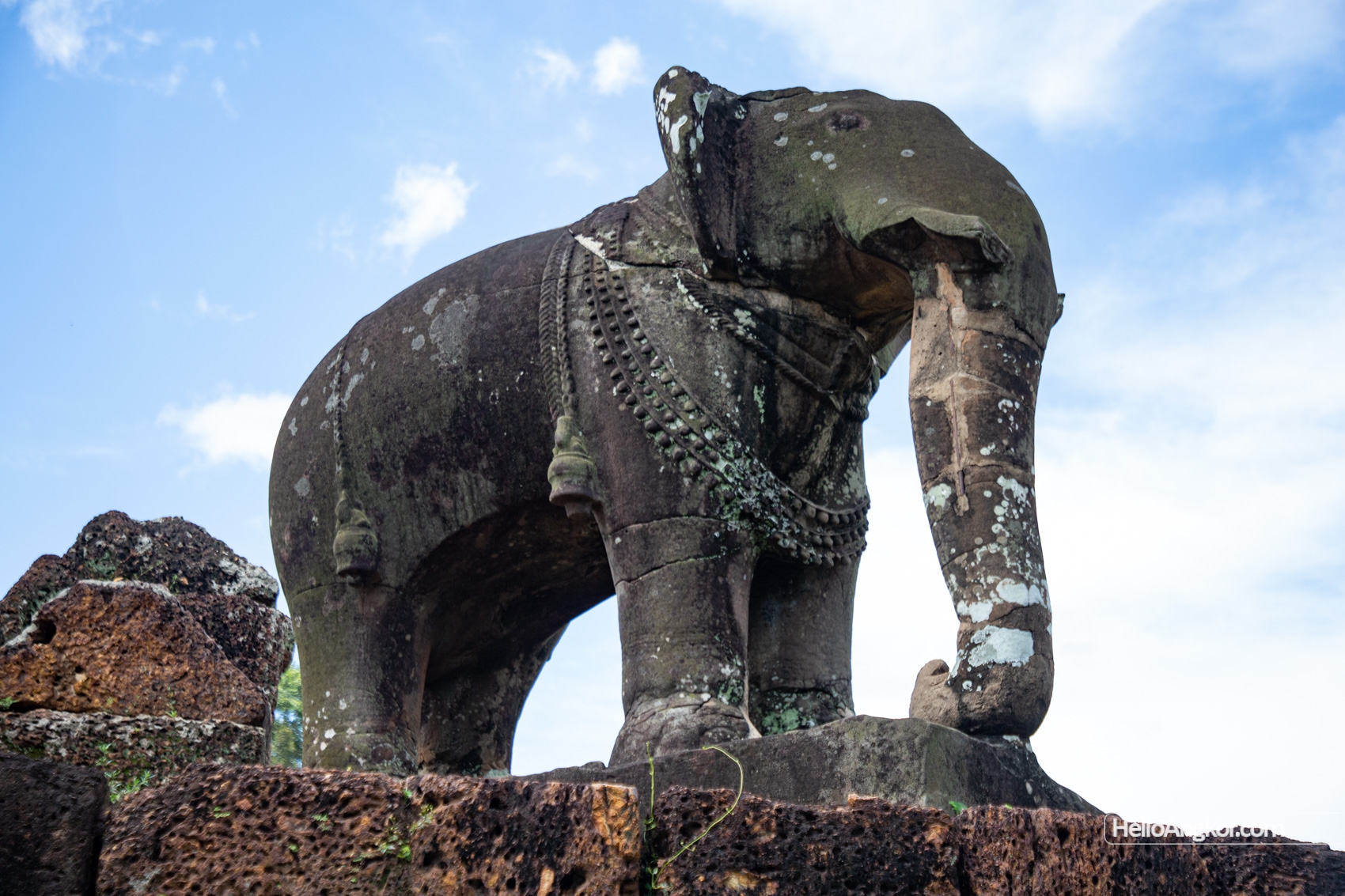
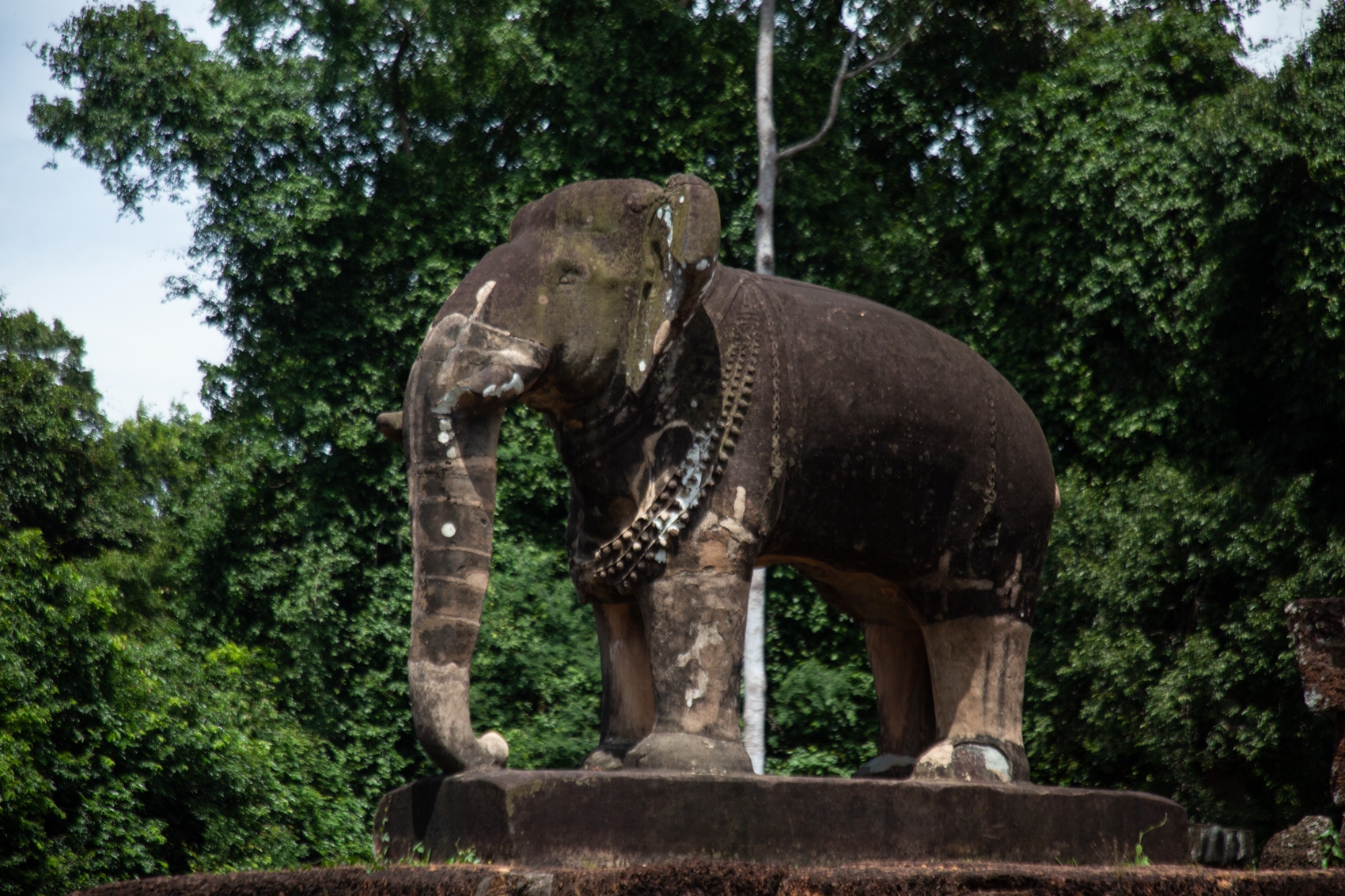
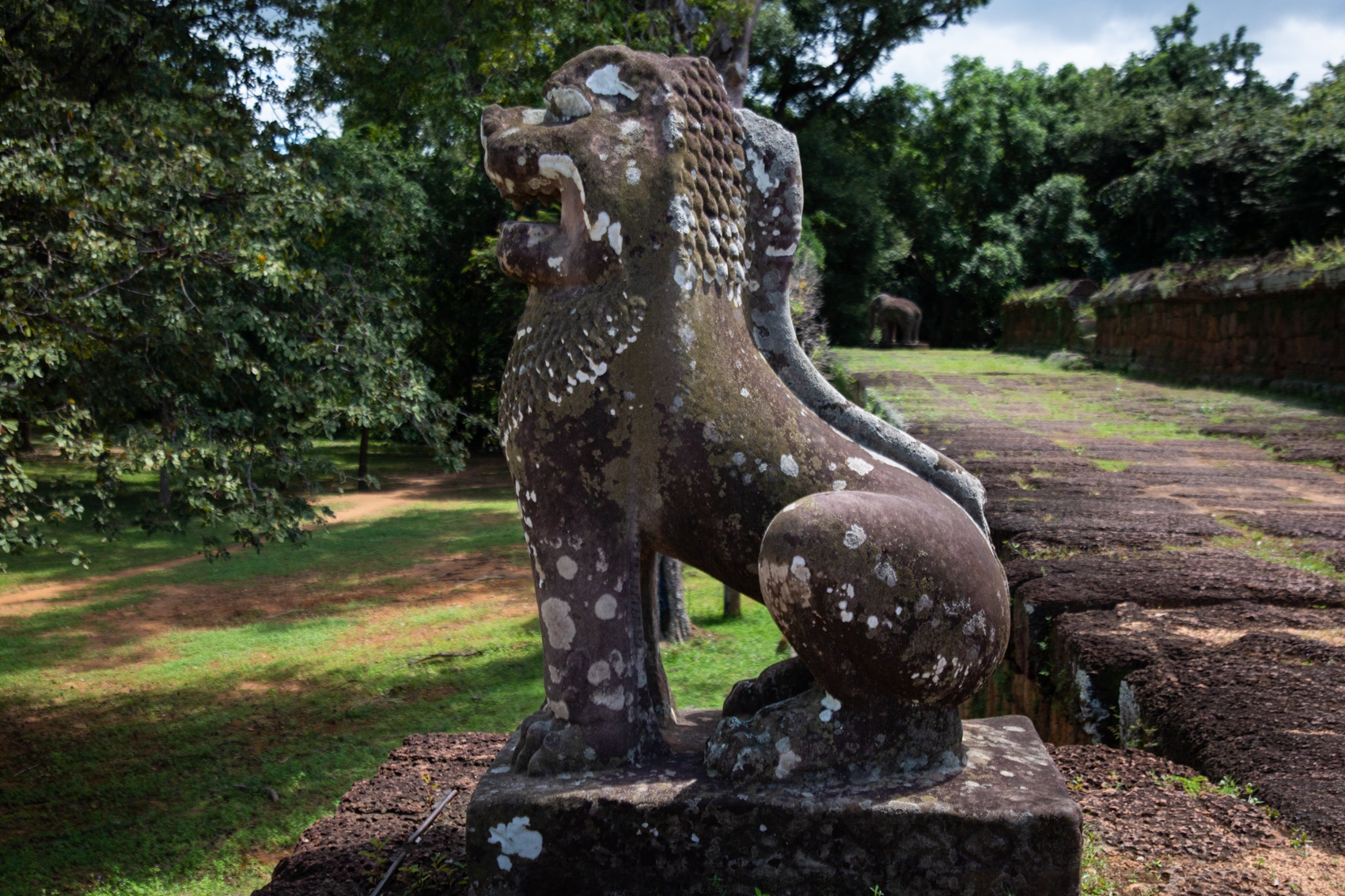
A selection of the many stunning lintels – there are many more, and you could spend some time here just enjoying the large array of idols, characters and art.
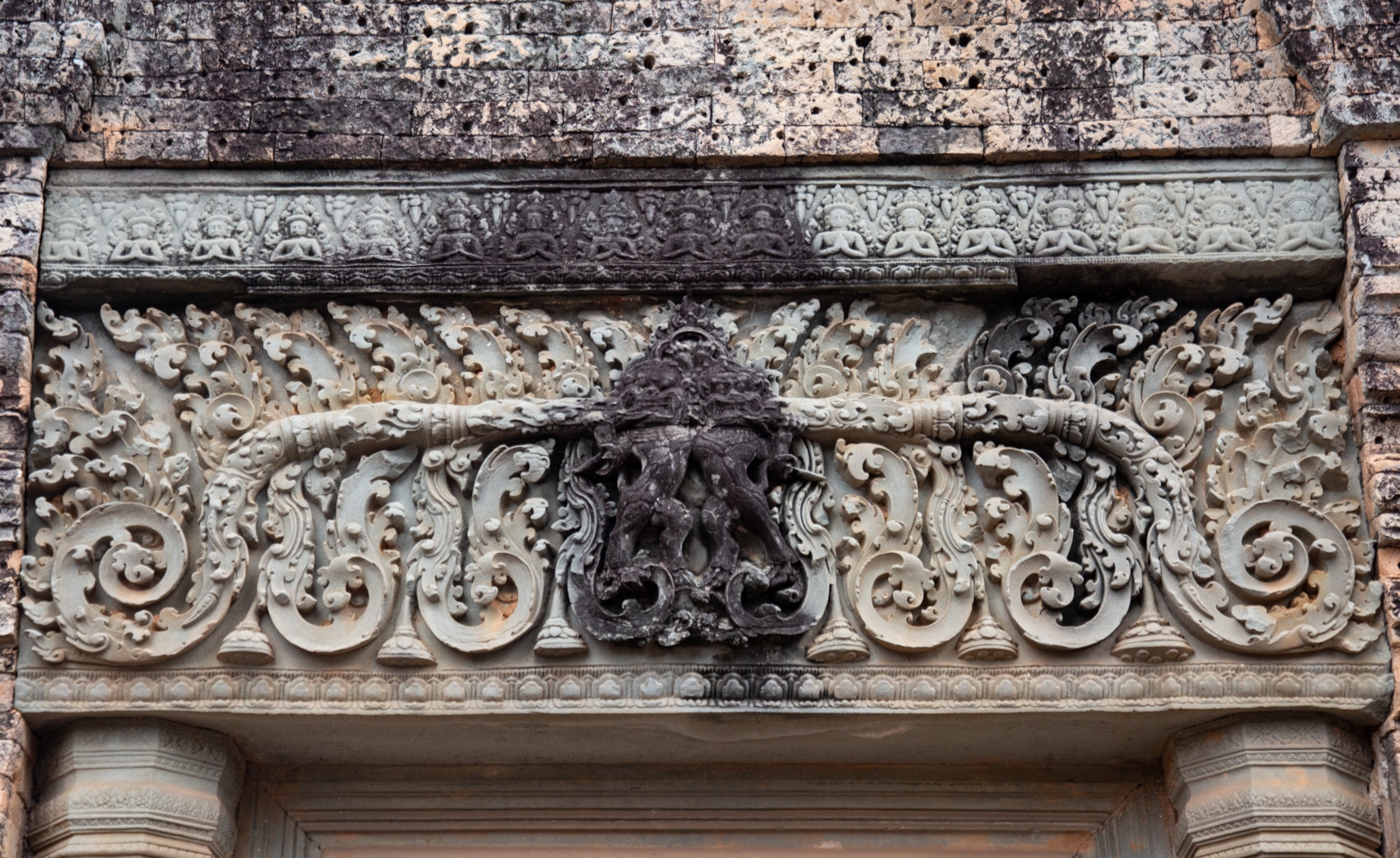
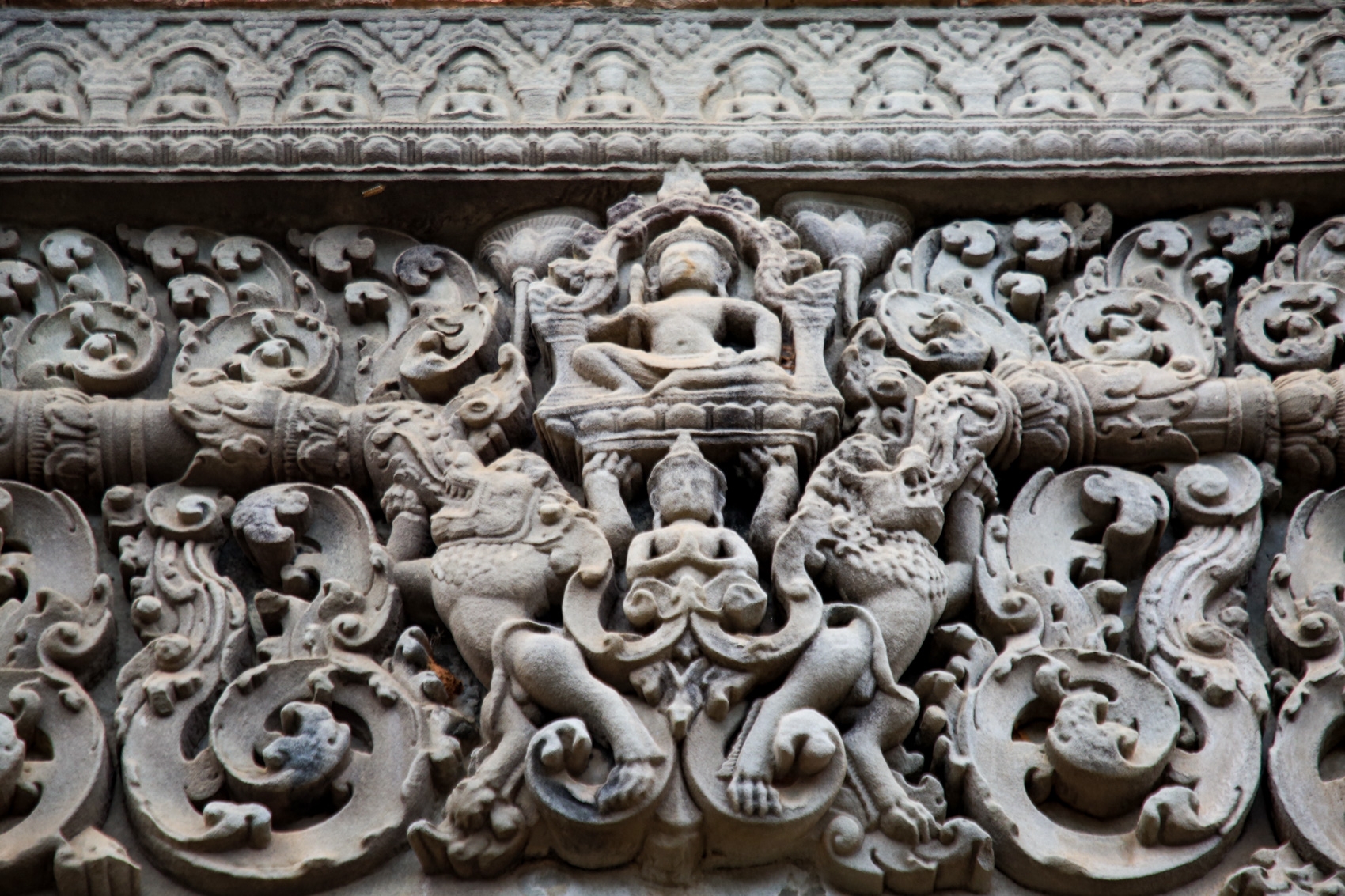
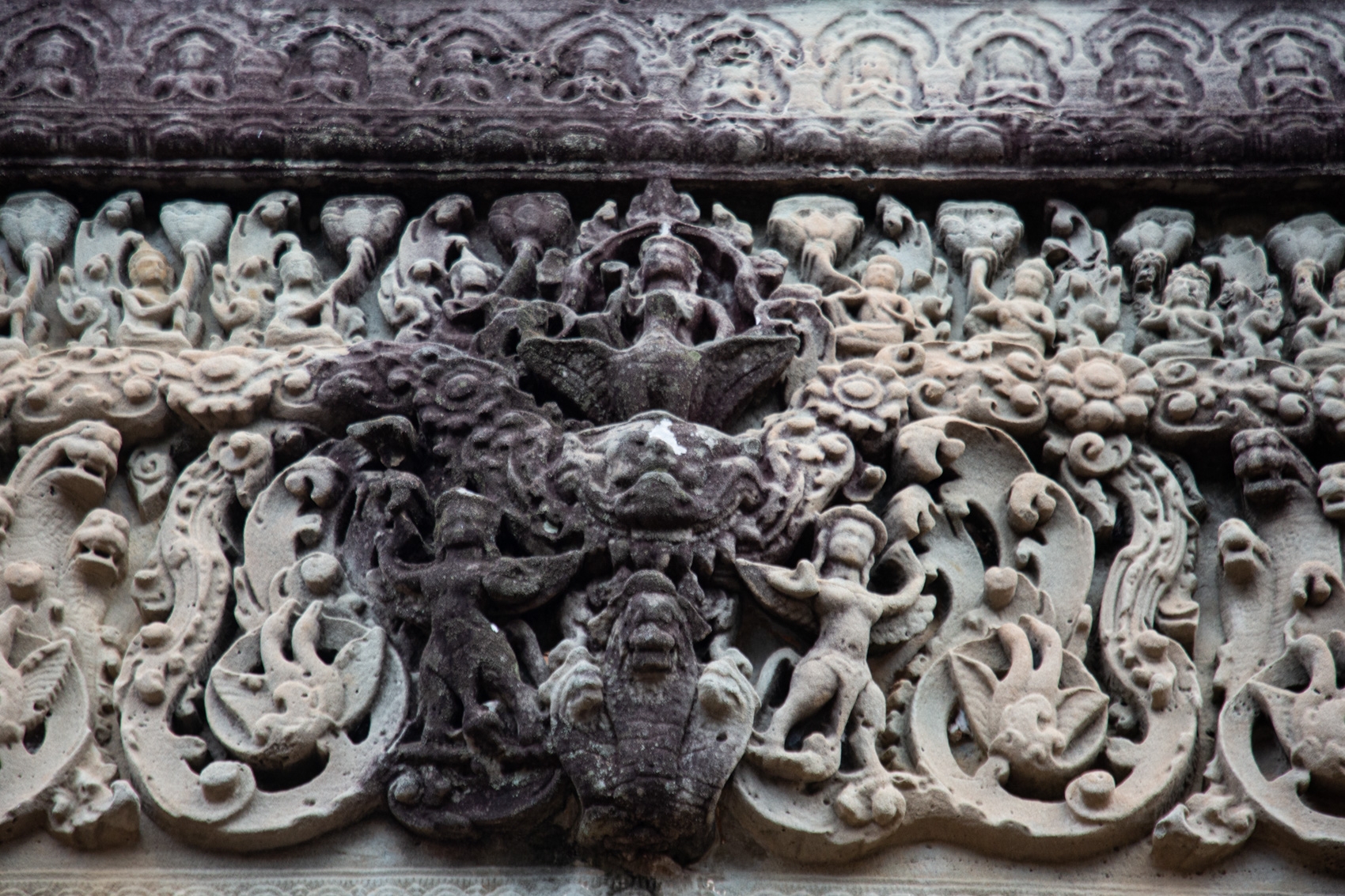
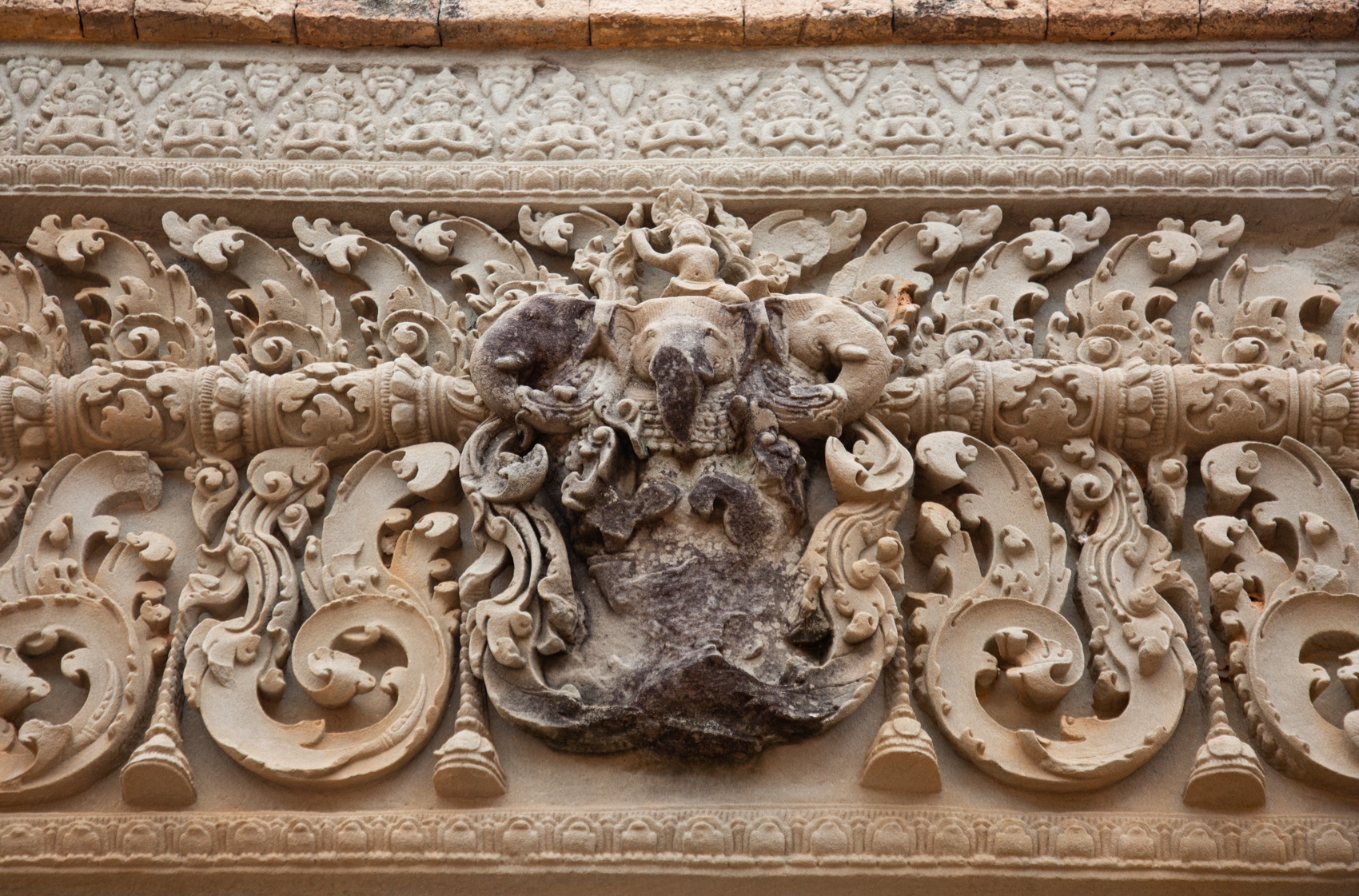
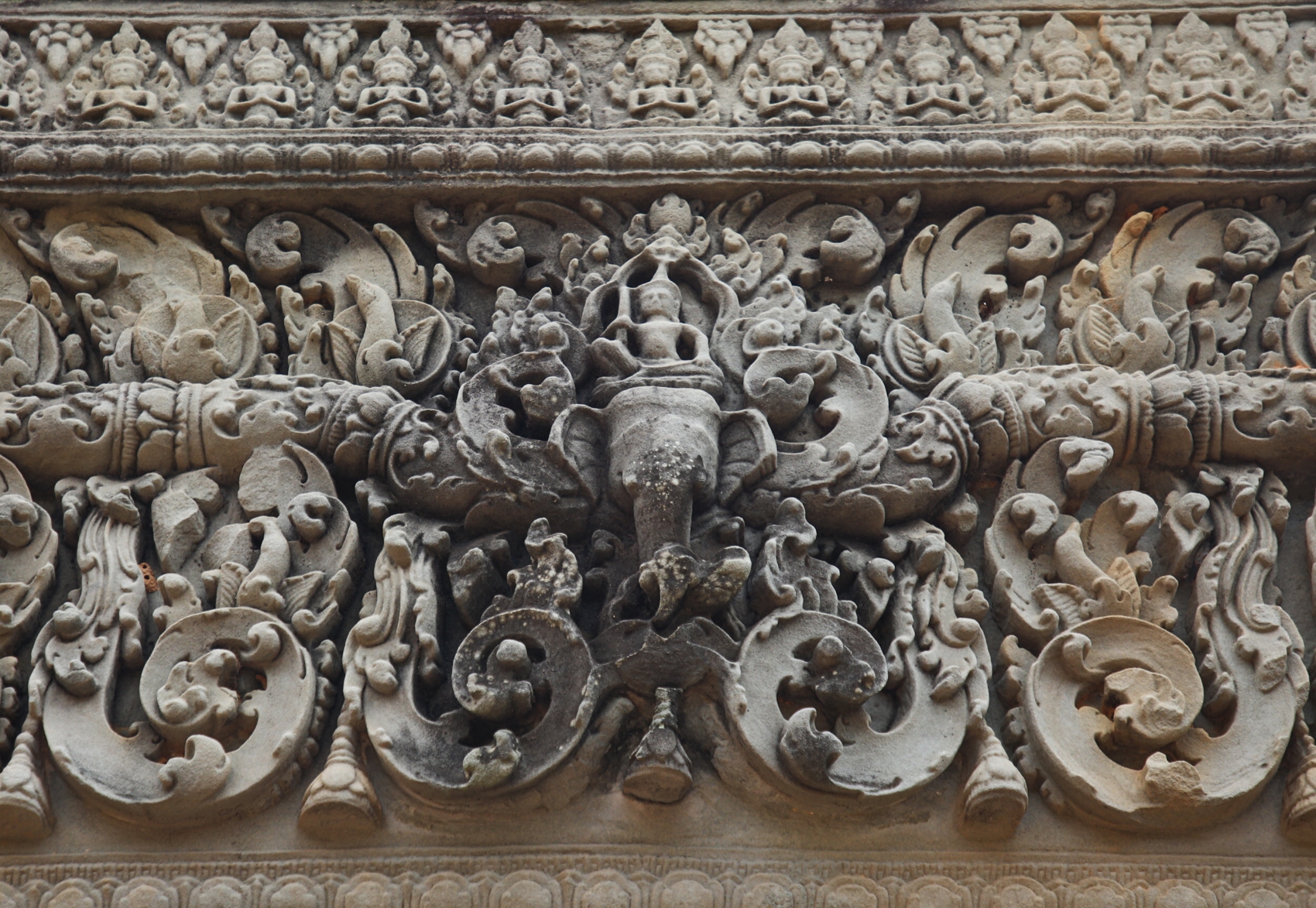
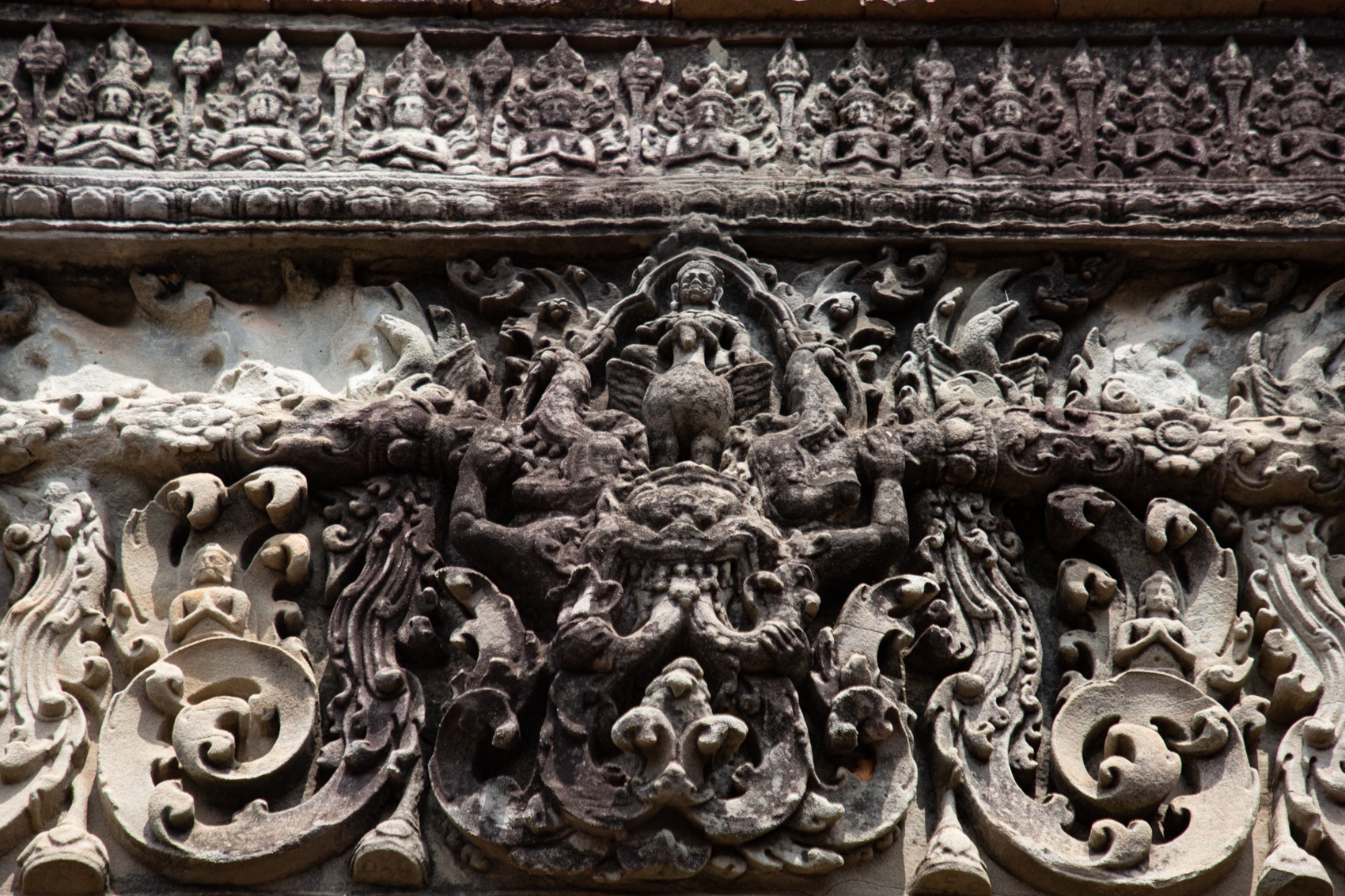
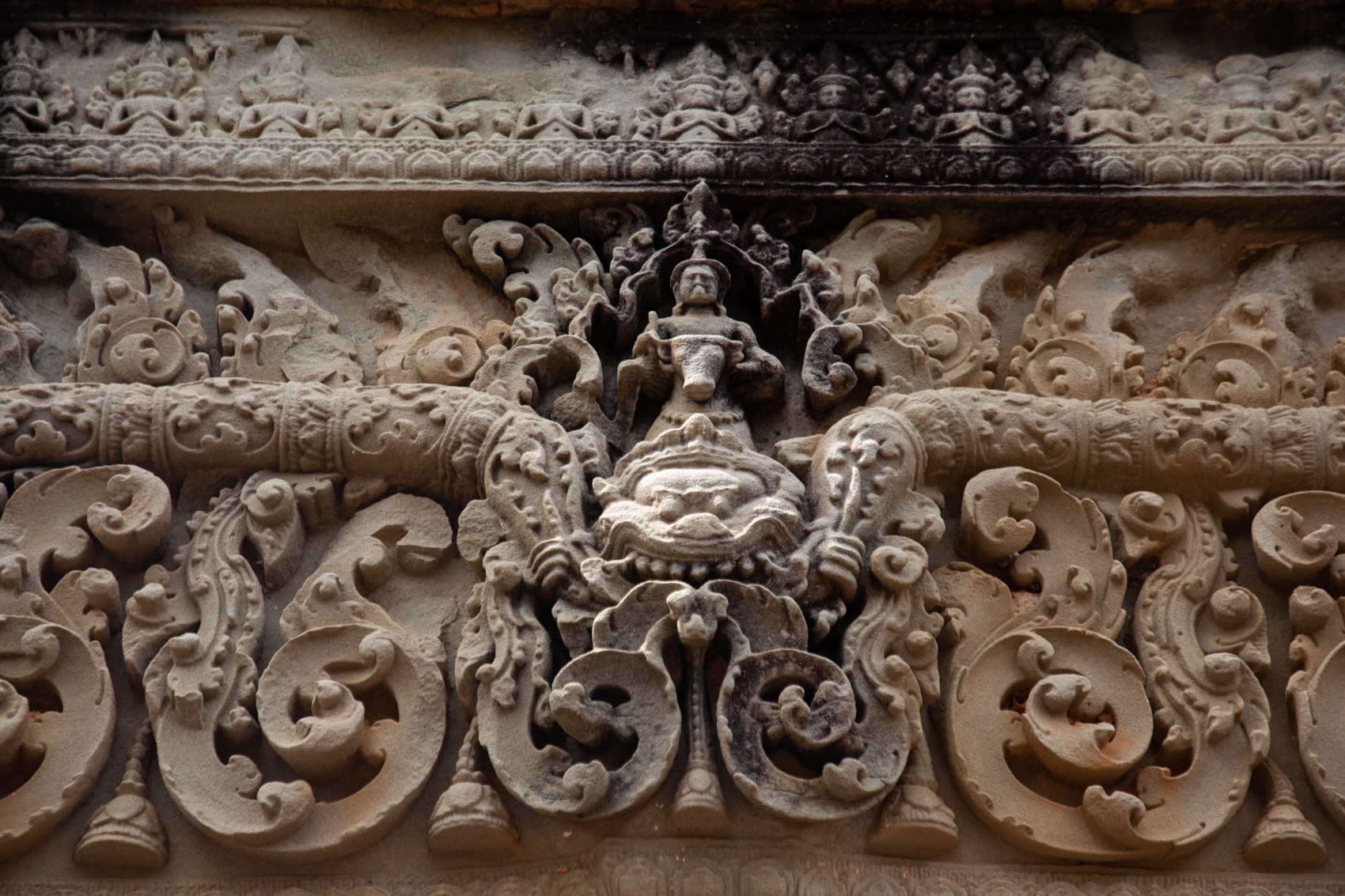
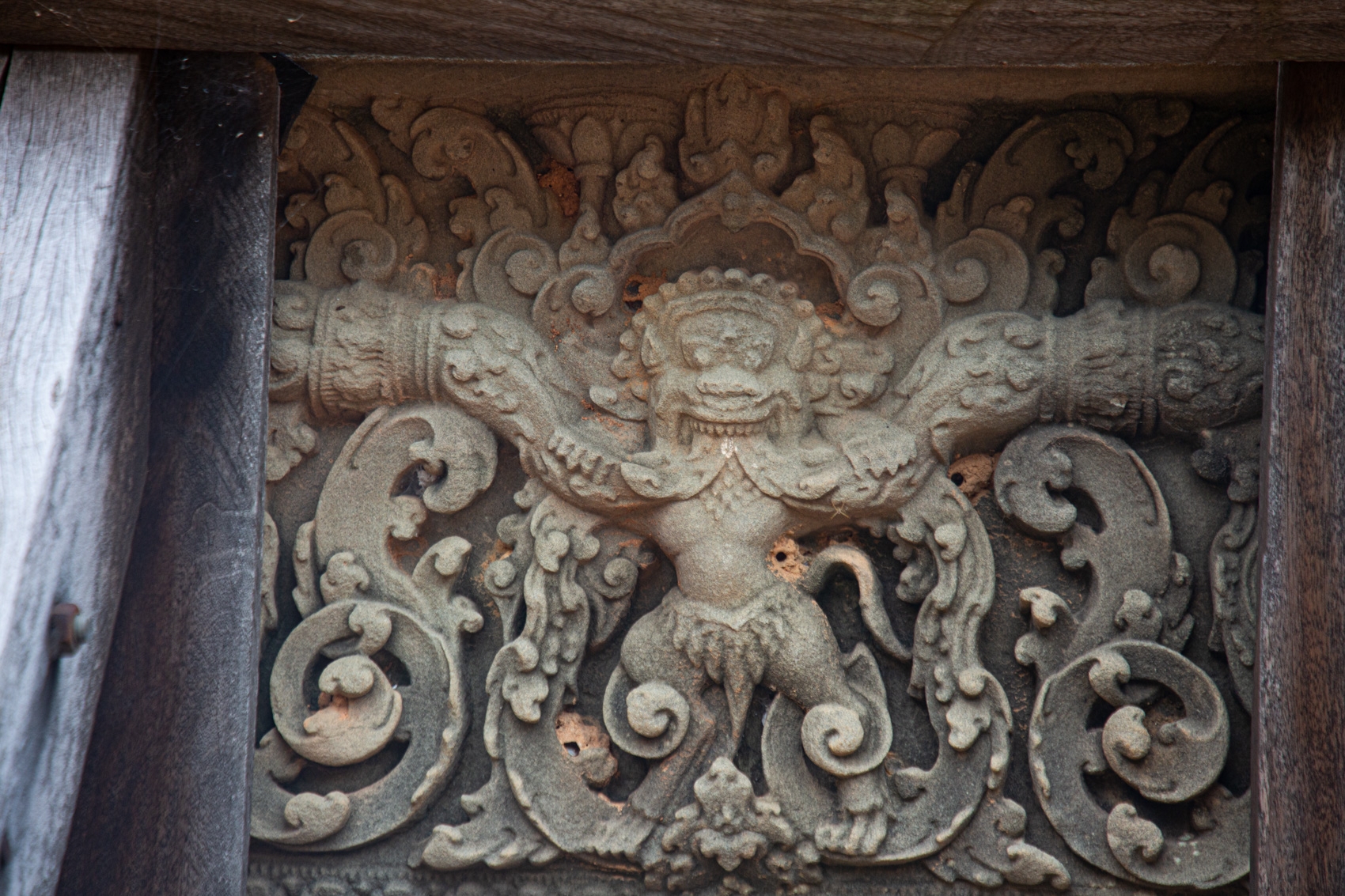
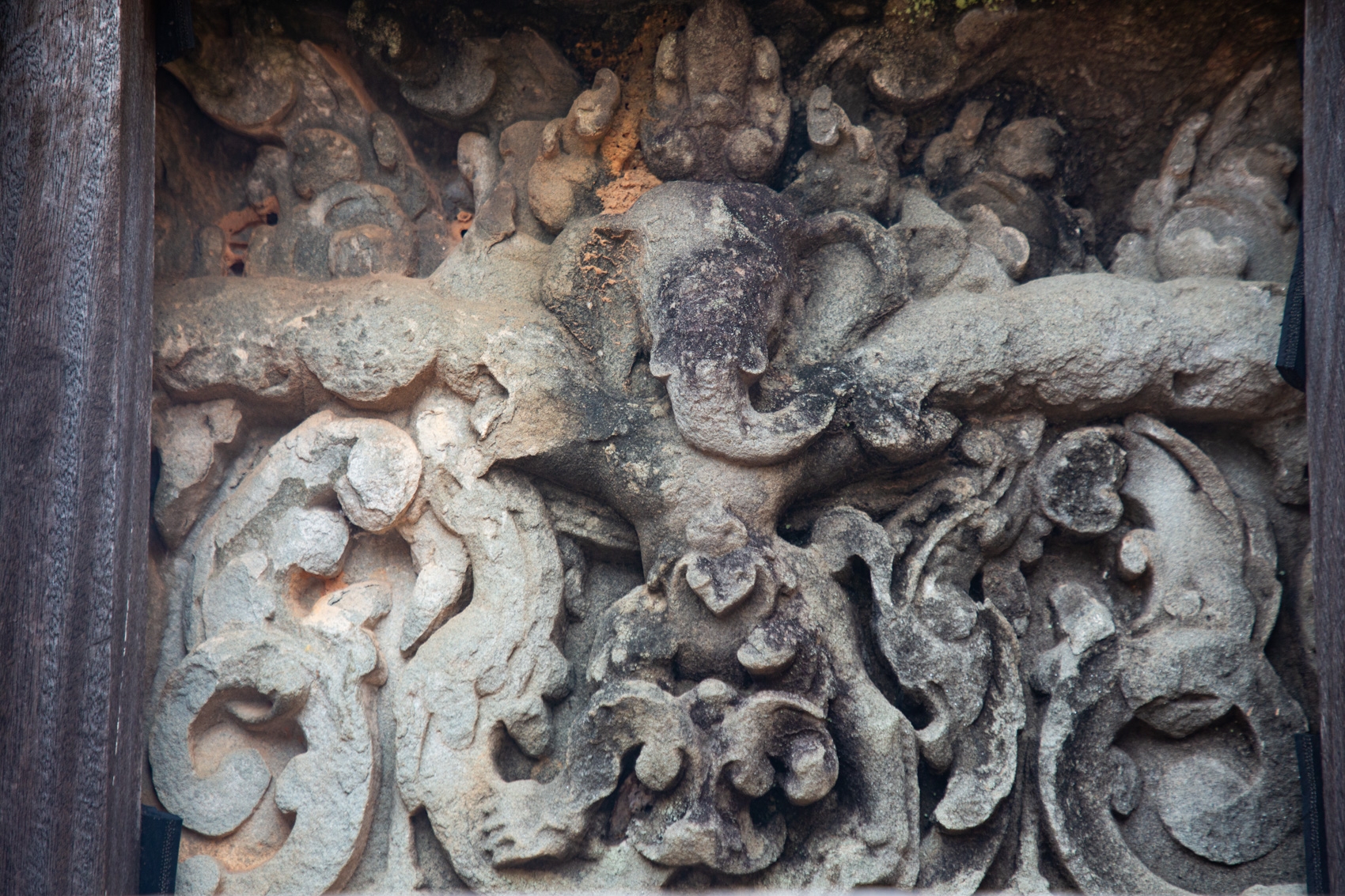
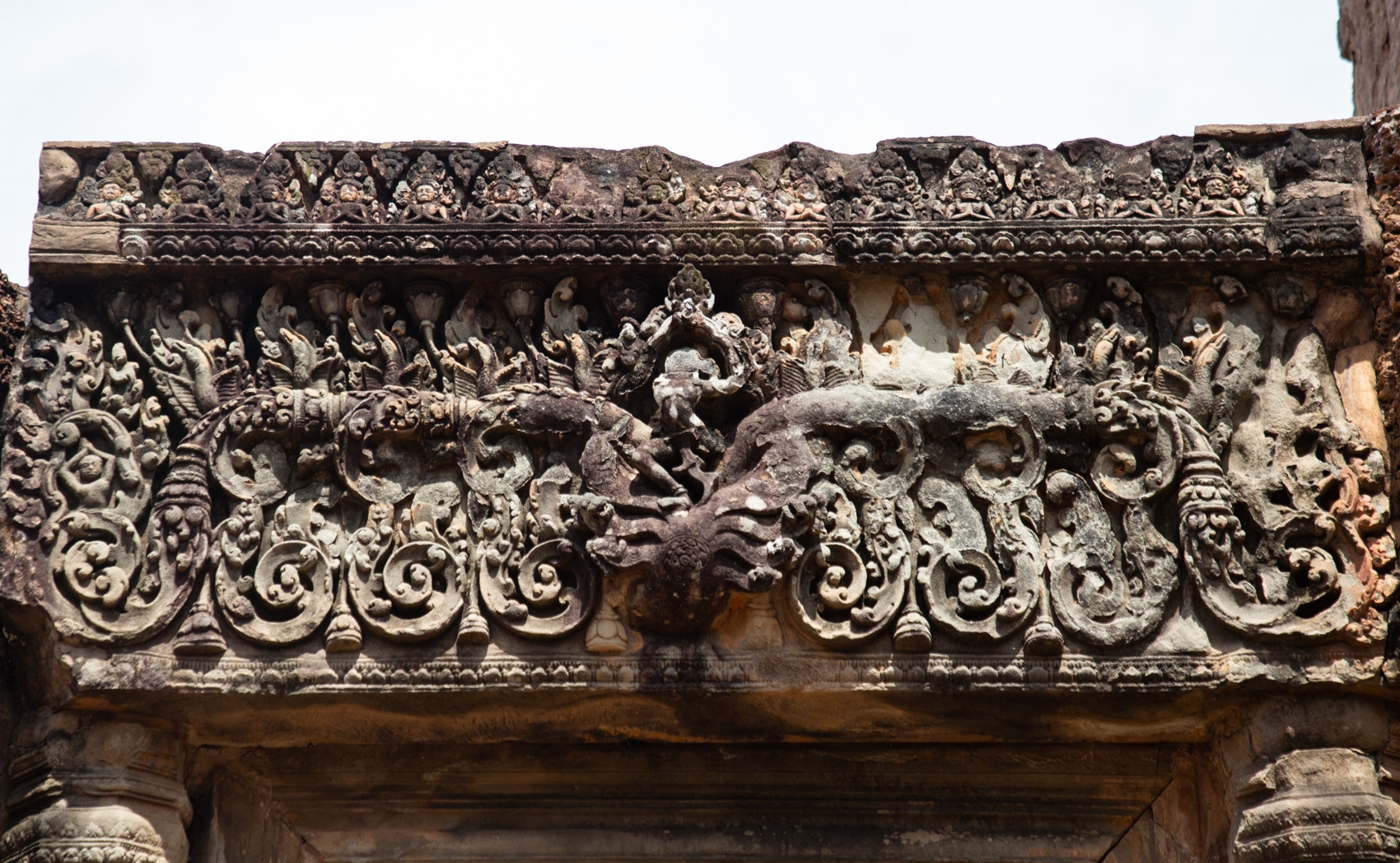
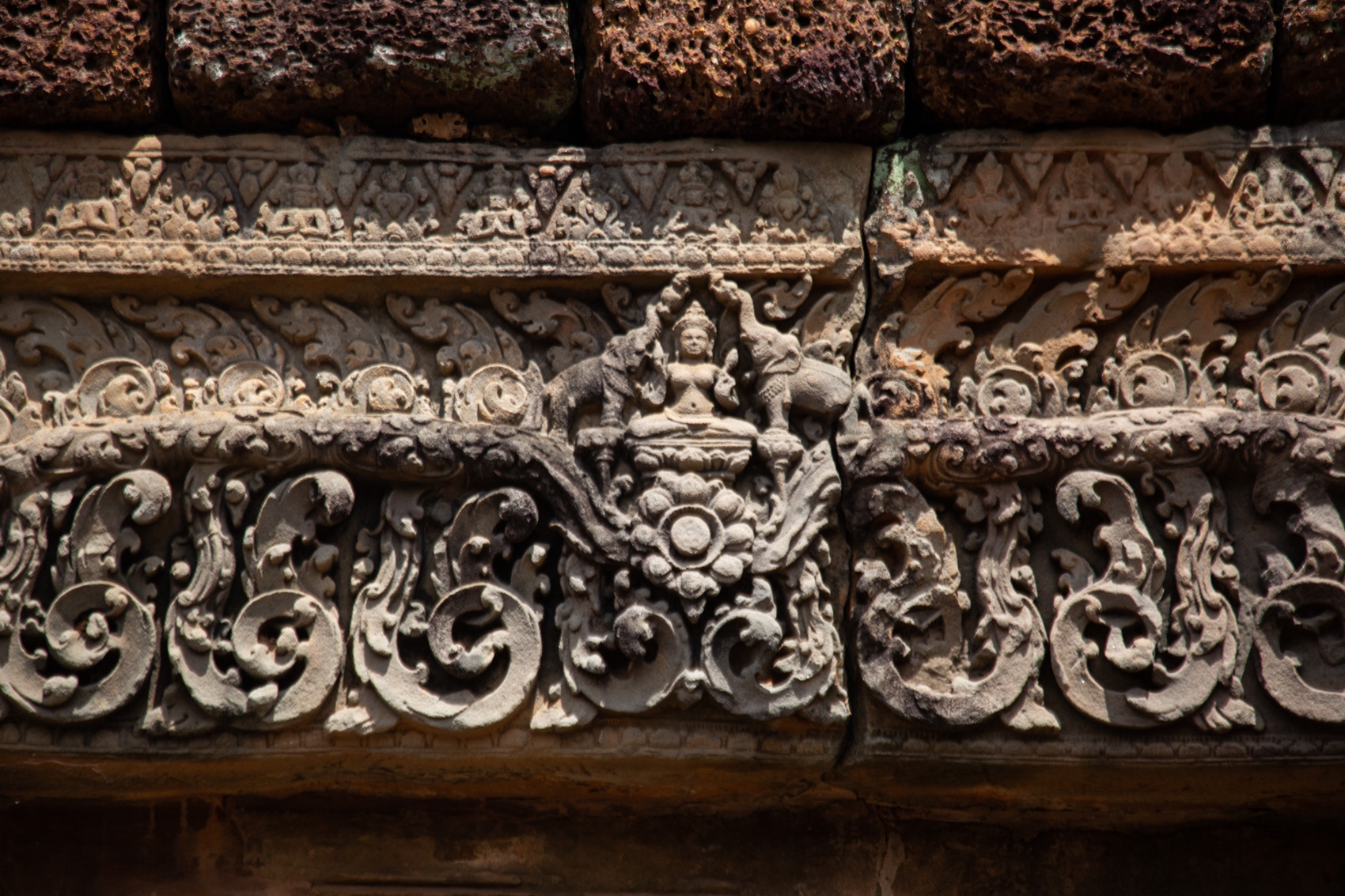
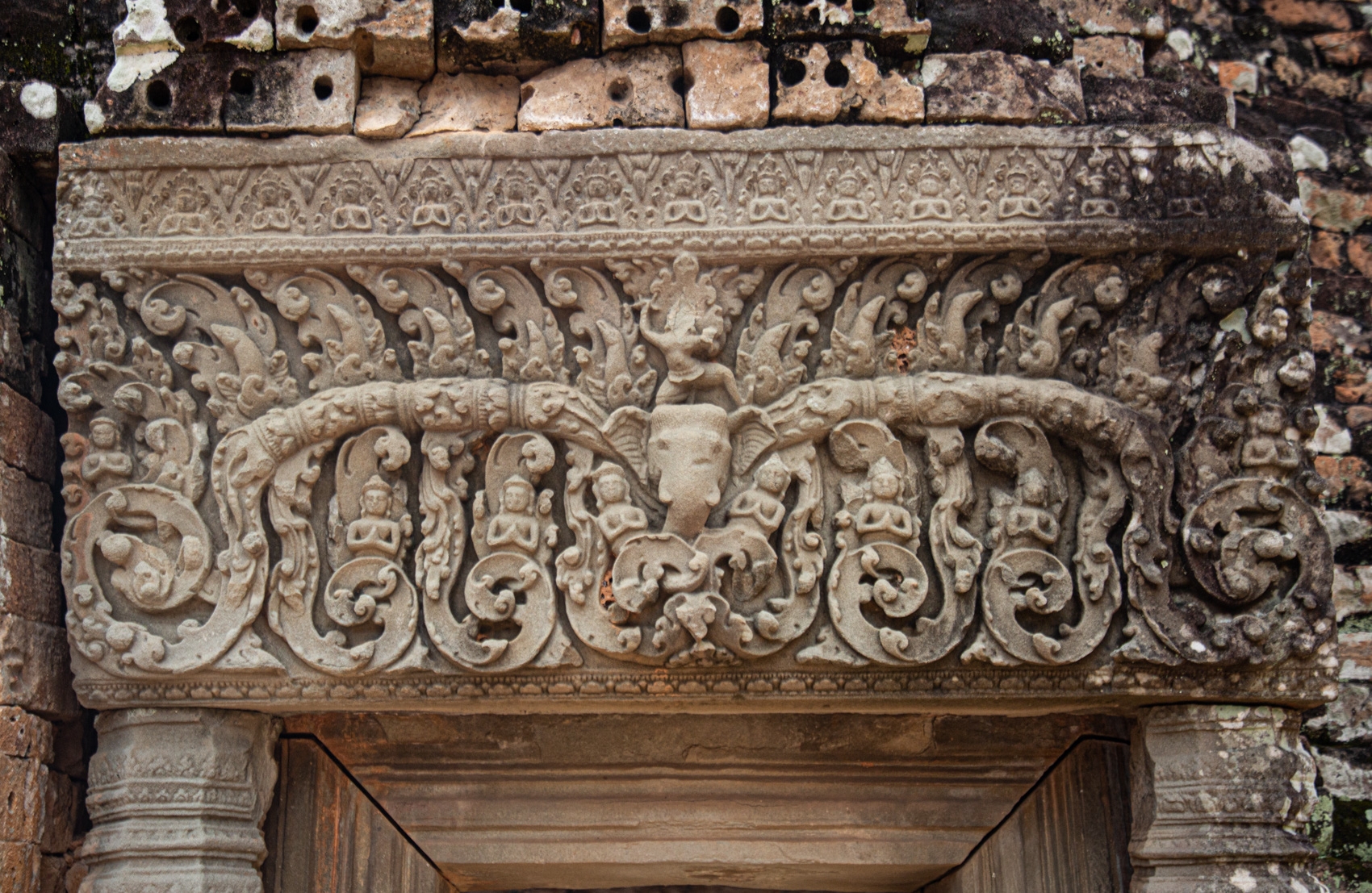
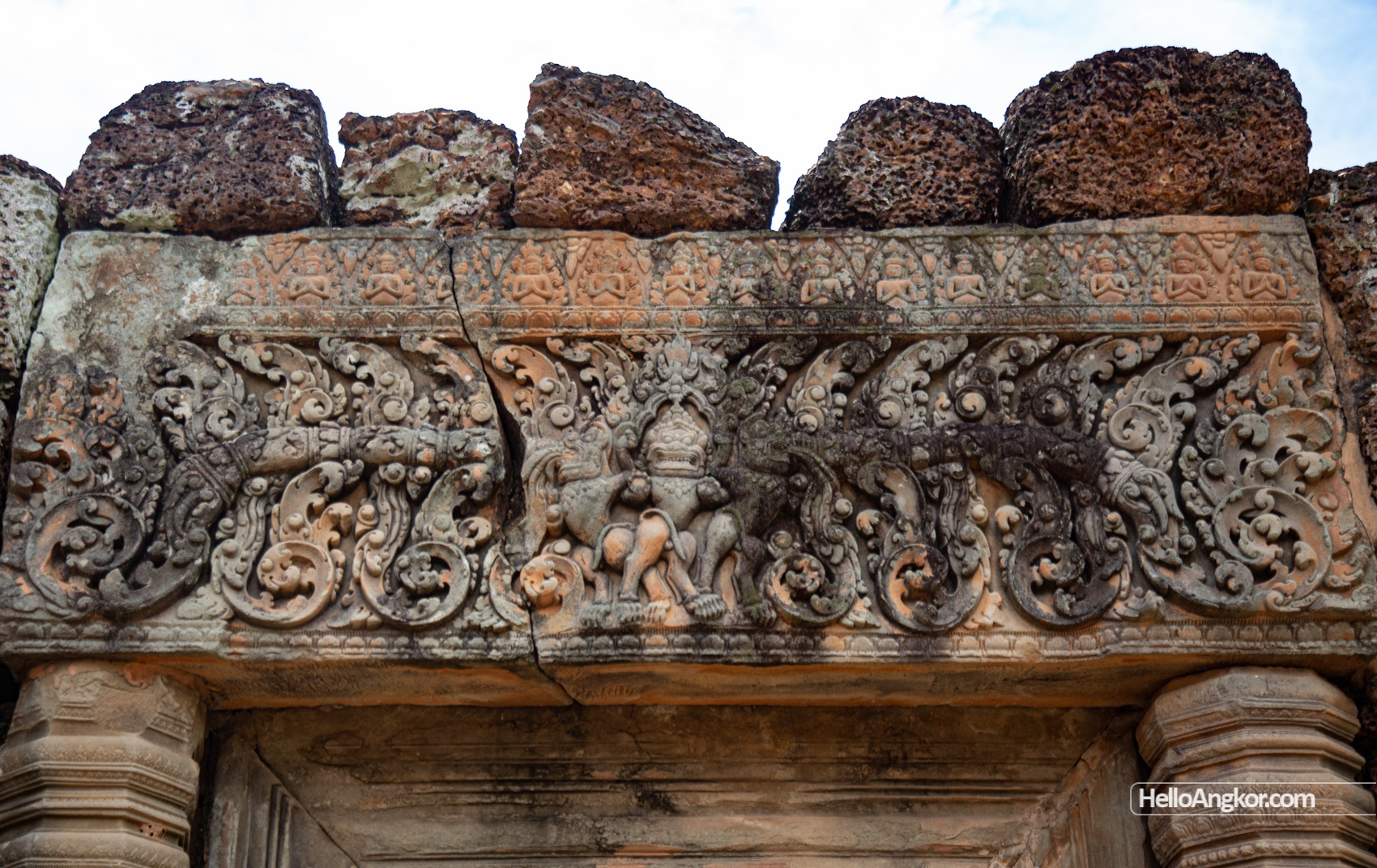
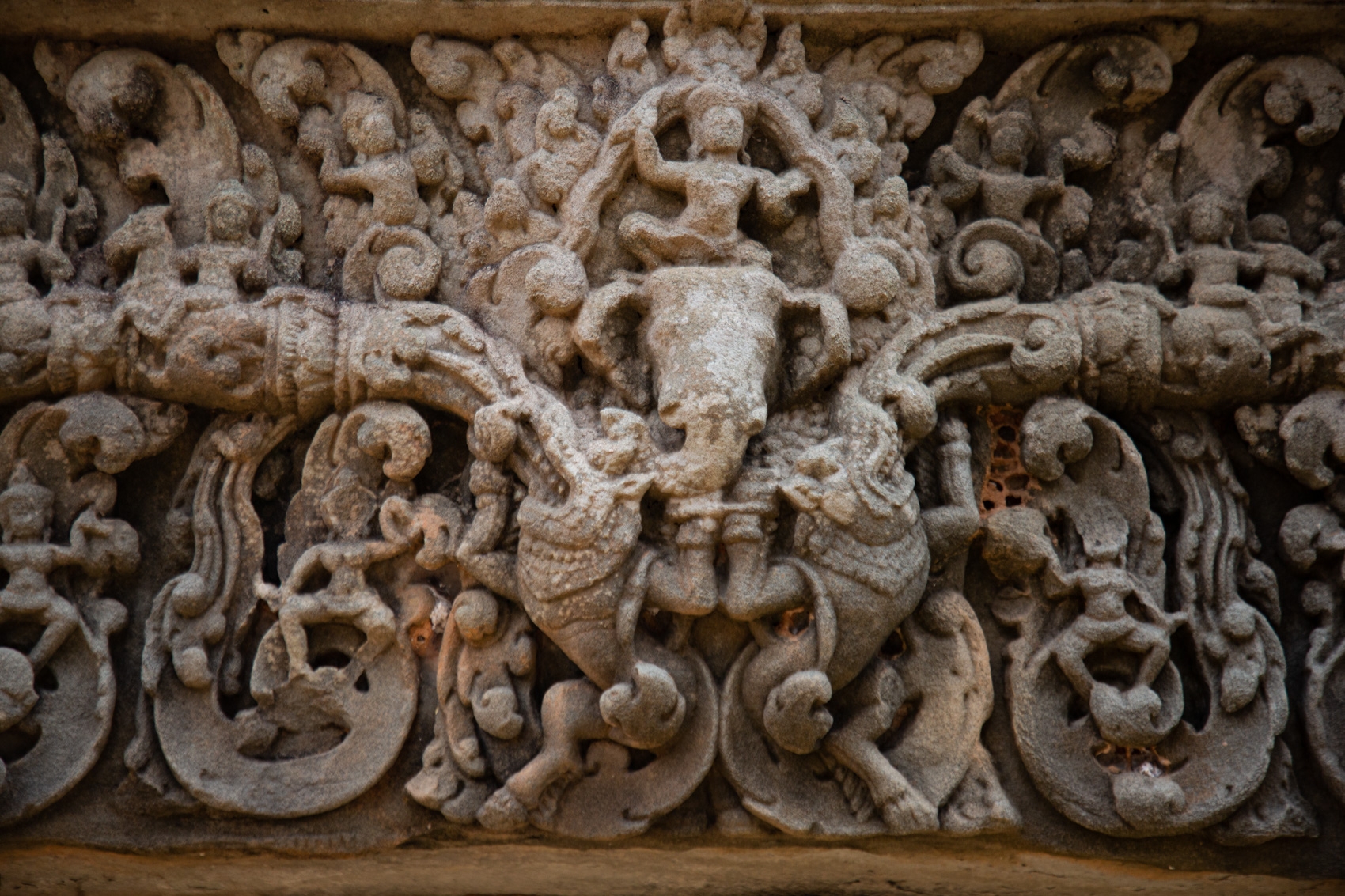
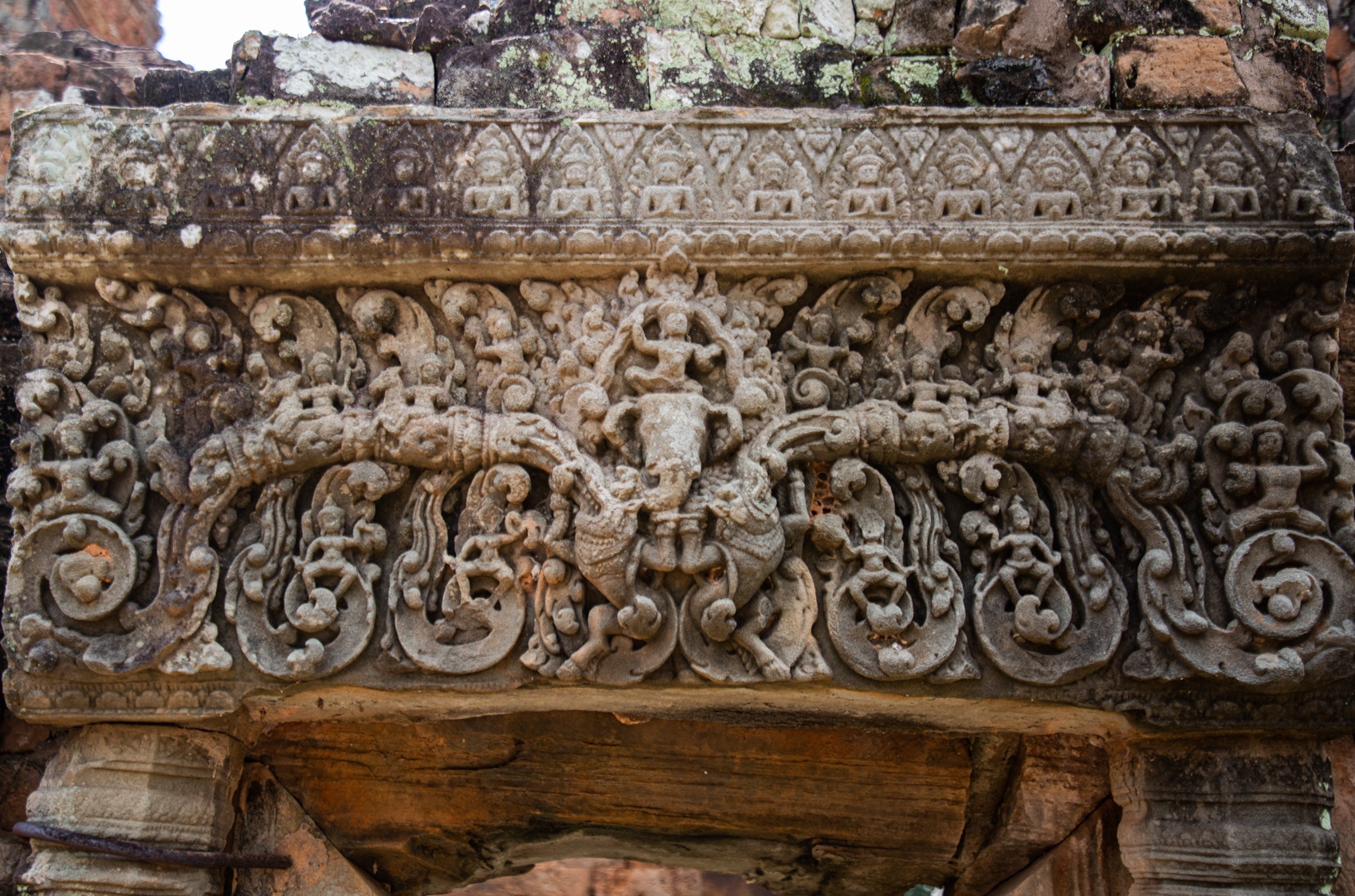
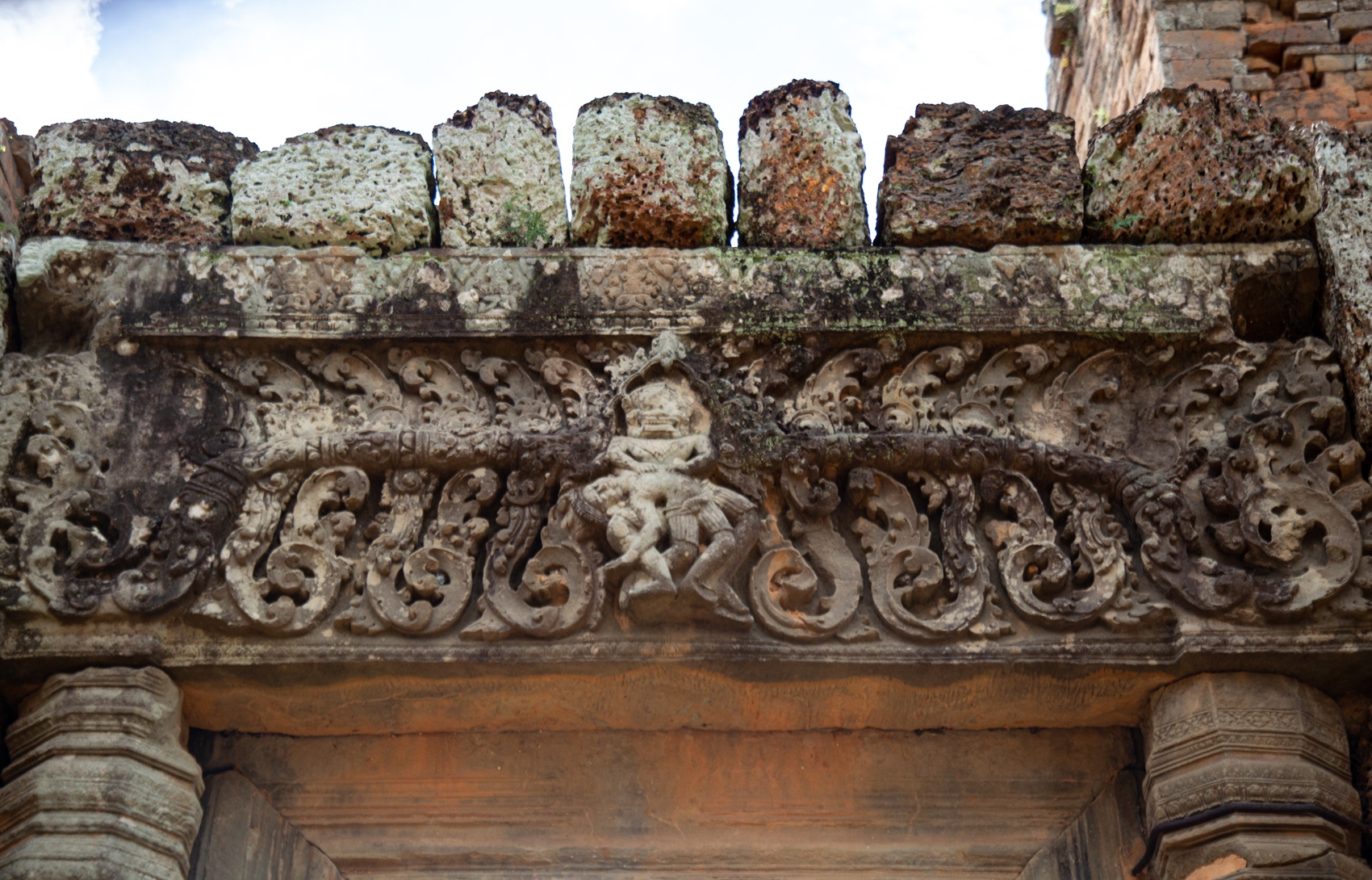
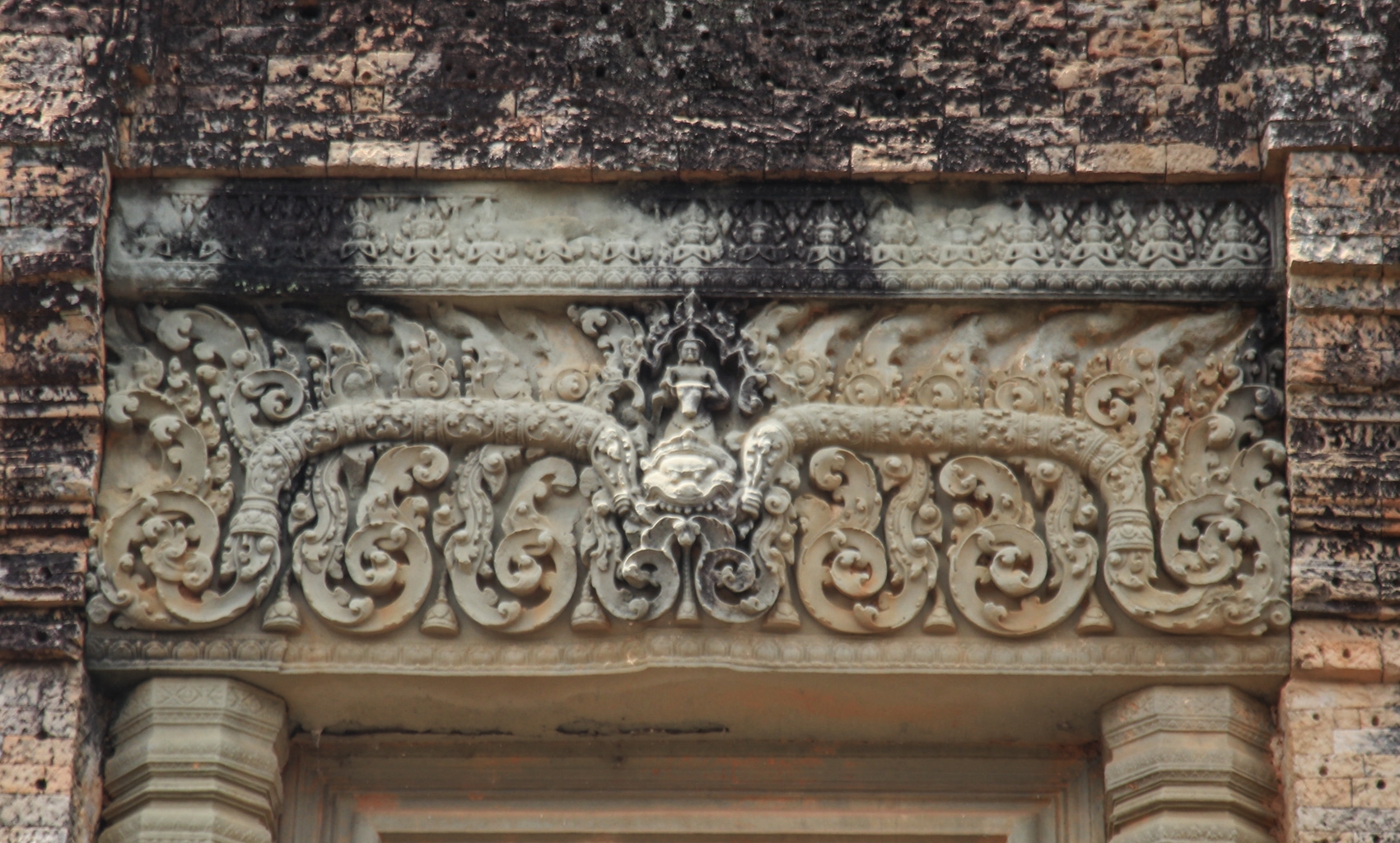
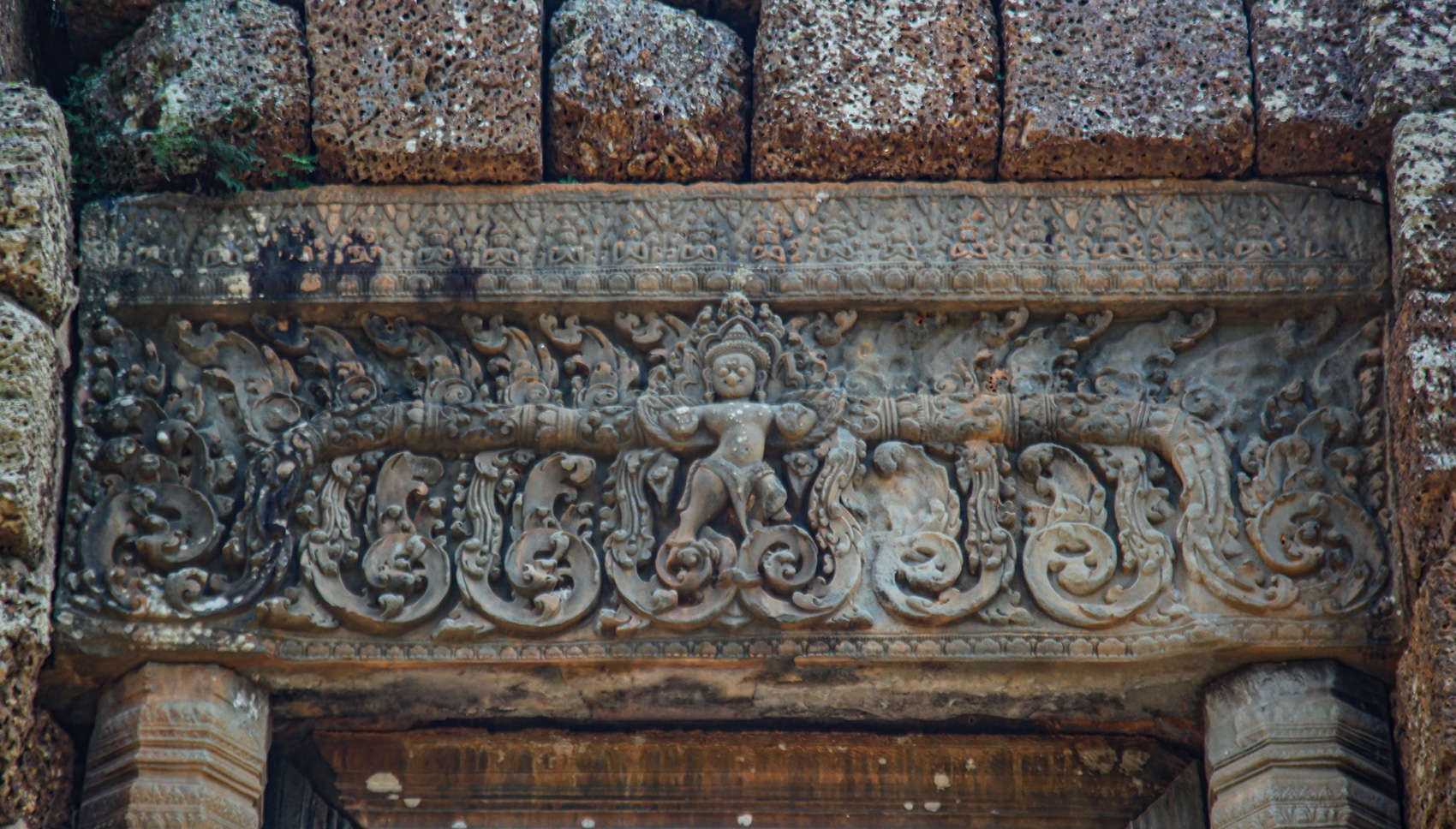
History & Layout
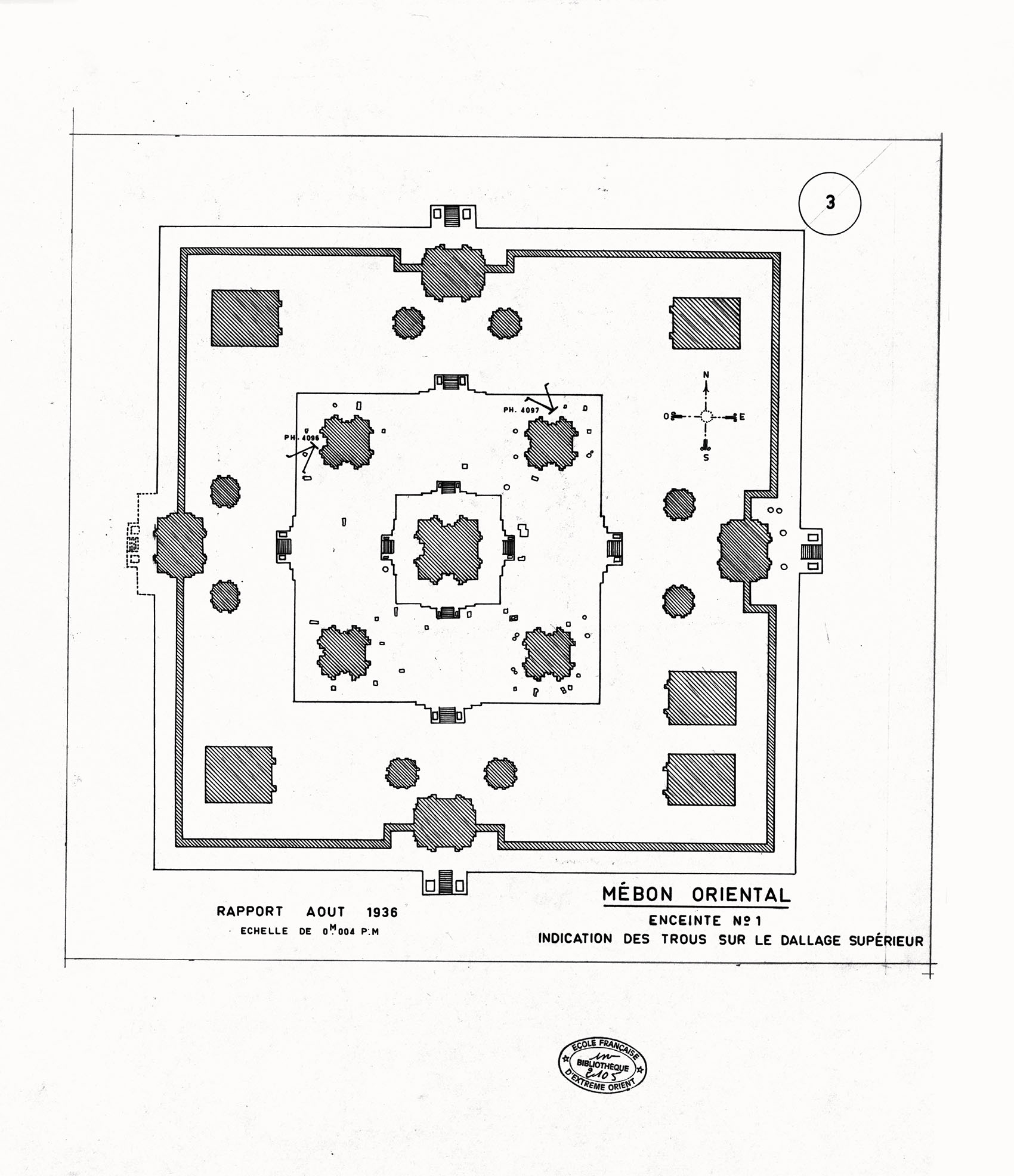
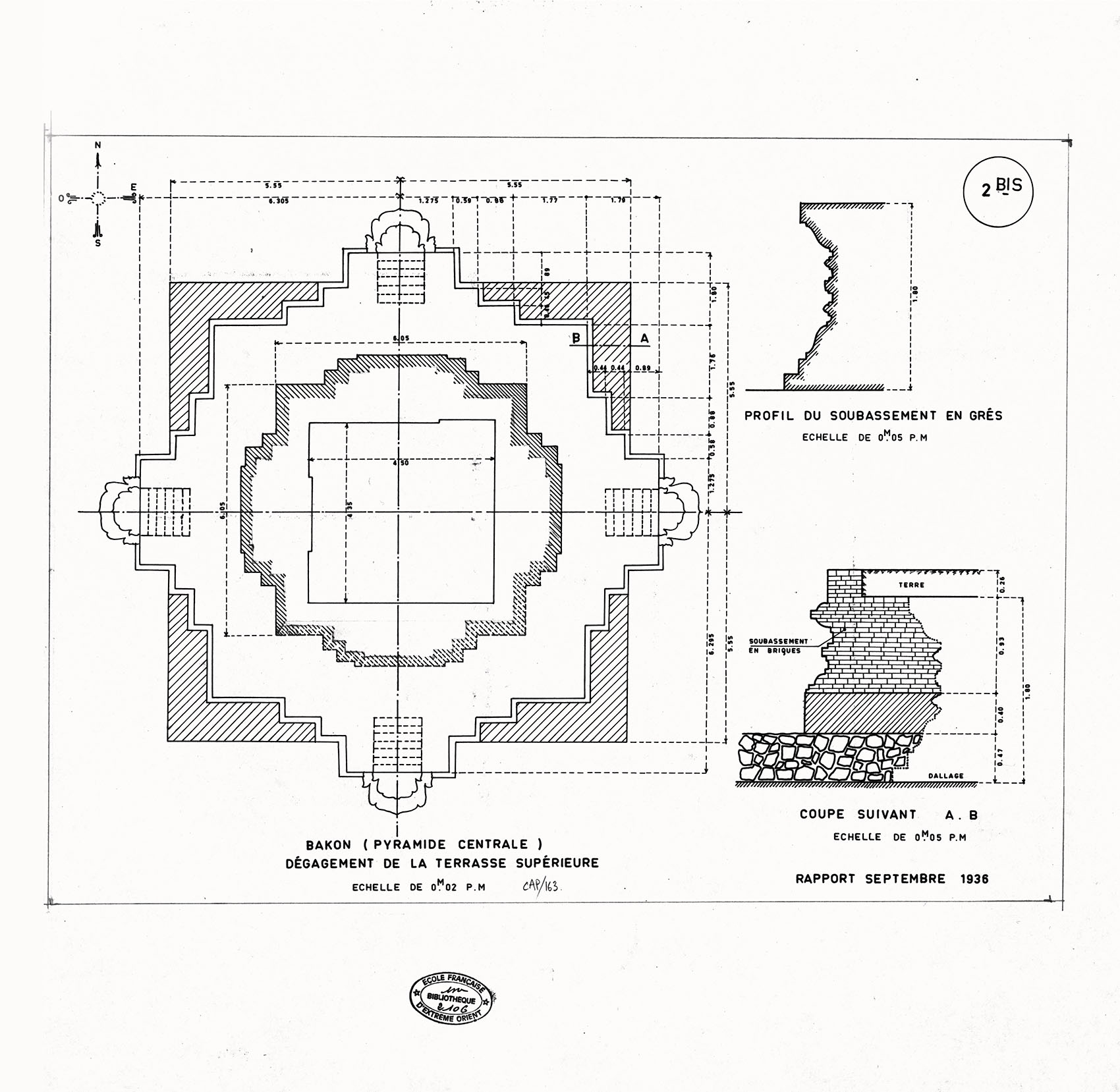
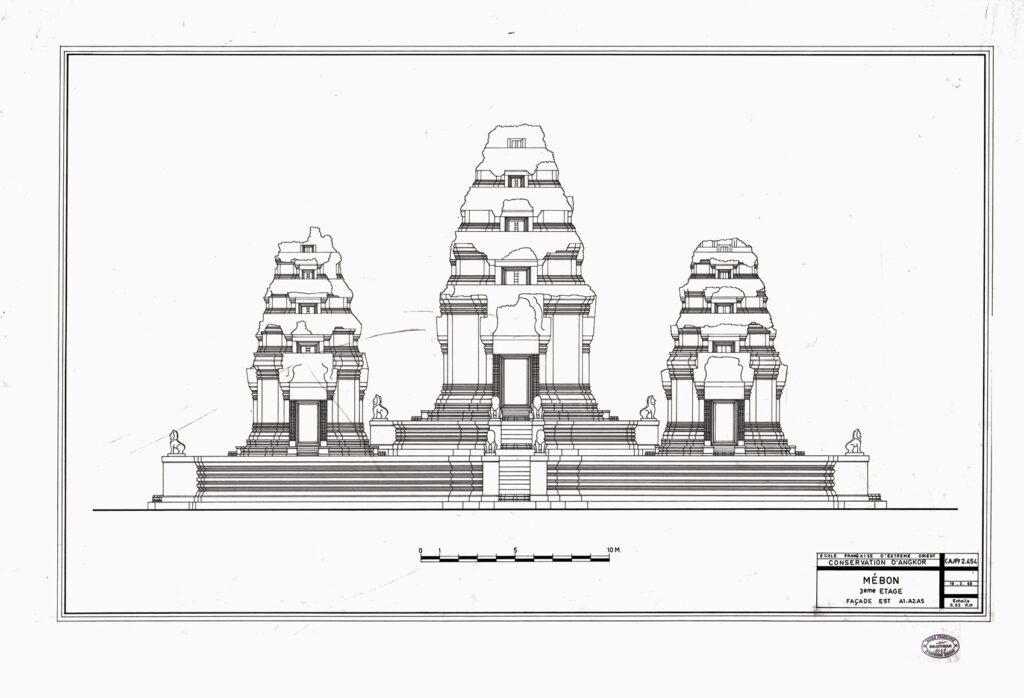
Recovered by Henri Marchal in 1922, an inscribed stele originating from the east gopura provides the date for the site’s foundation (952 AD) and a eulogy to King Rajendravarman (reign 944 to 968 AD), noting his constructions, and noting the erection of several idols: Shiva, Parvati, Vishnu with Brahma, and eight lingas.
Built upon an island, in the center of what was the massive Yasodharatataka Baray (7 km x 1.8 km), the temple shares an east-west axis with the East Baray Terrace, Victory Gate, and the Royal Palace of Angkor Thom. It shares a north-south axis with Pre Rup temple to its south.
Measuring around 100 m x 100m it features an entry staircase at each cardinal point which is flanked by guardian lions. Beautiful stone elephants adorn each corner of the first and second tiers. Inside the outer laterite enclosure wall, entered via cruciform-shaped gopura (entrance gates) is a series of long halls of varying length with the next tier also offering stairs on each side leading up to another enclosure wall with gopura.
Inside this enclosure, there is a brick shrine flanking each side of the gopura, totalling eight plus there are five rectangular structures constructed of laterite with three that open to the west as is typical of “library” buildings, all the other buildings open to the east. All of these feature sandstone doorframes, and ornate door columns topped with lintels.
The next tier is built of sandstone and provides the platform for the five grand towers. This also with stairs at each side, flanked by guardian lions.
The towers are of brick while laterite and sandstone are also used for their base and doorframes. The doors are flanked by ornate decorative columns, topped by lintels, and flanked by devata that are carved into the brickwork on the side walls. You’ll surely notice all the small holes which would have helped retain the original stucco finish of which traces can still be seen in places.
It’s known that the central tower housed a linga, the southeast tower housed an image of Brahma (remnants of the round pedestal can be seen inside and on a lower tier), while the others are unknown, although Dr Sophia Baird has put forward a hypothesis noted and linked to in the references below.
Another thing not to miss at the site is the beautiful sandstone offering table near the northern gopura, in another shrine, an image of the Buddha has been added.
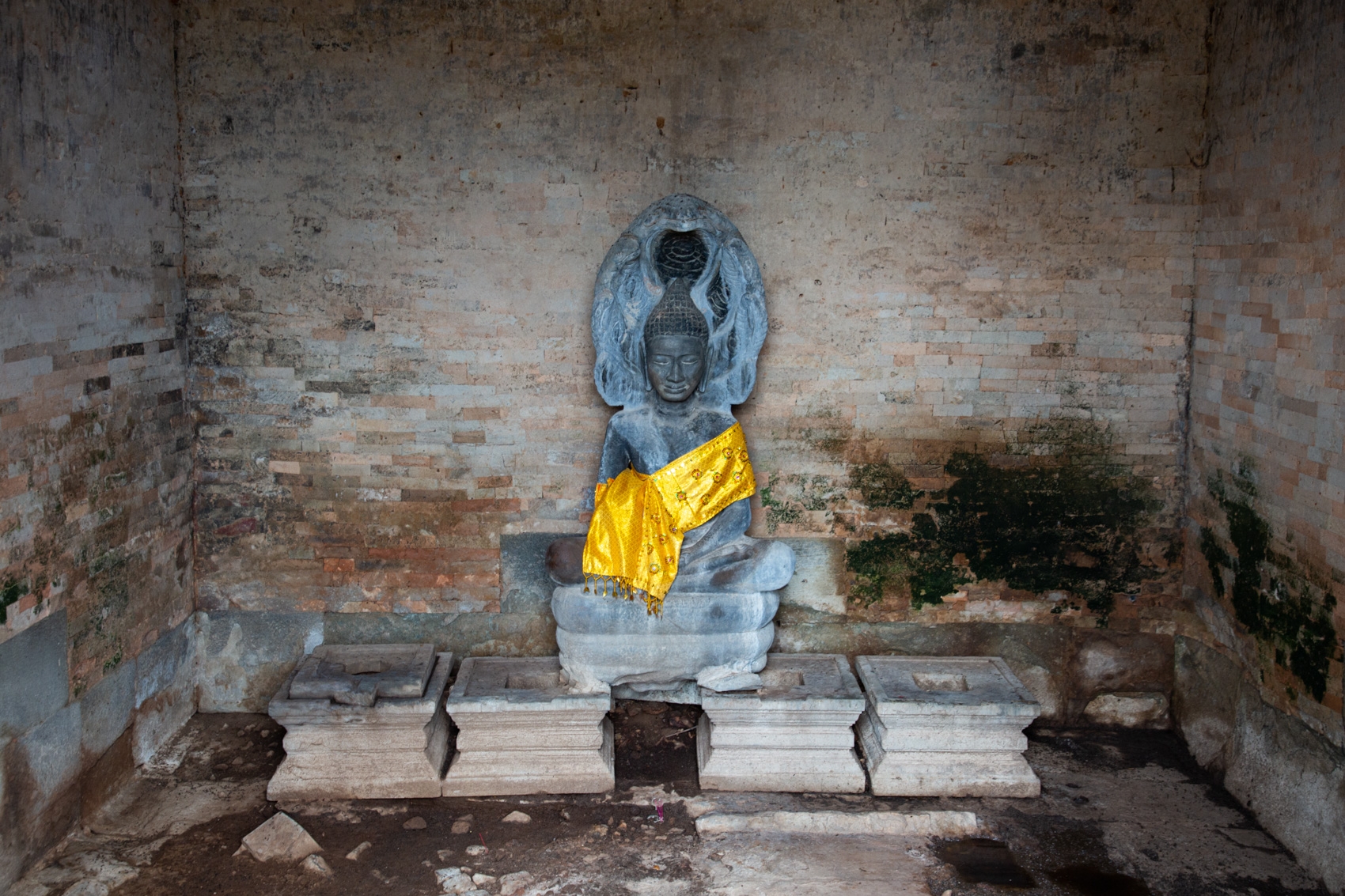

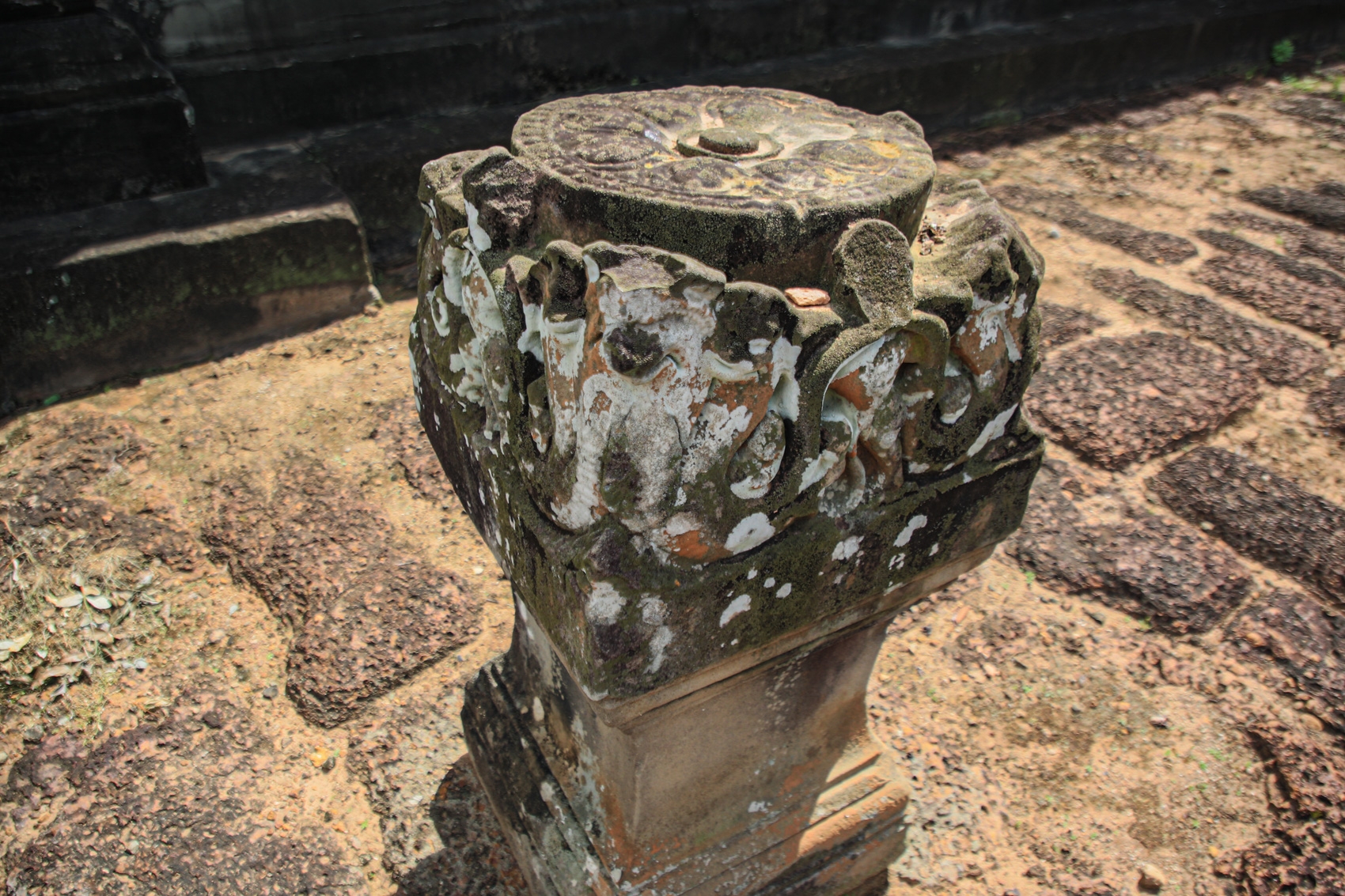
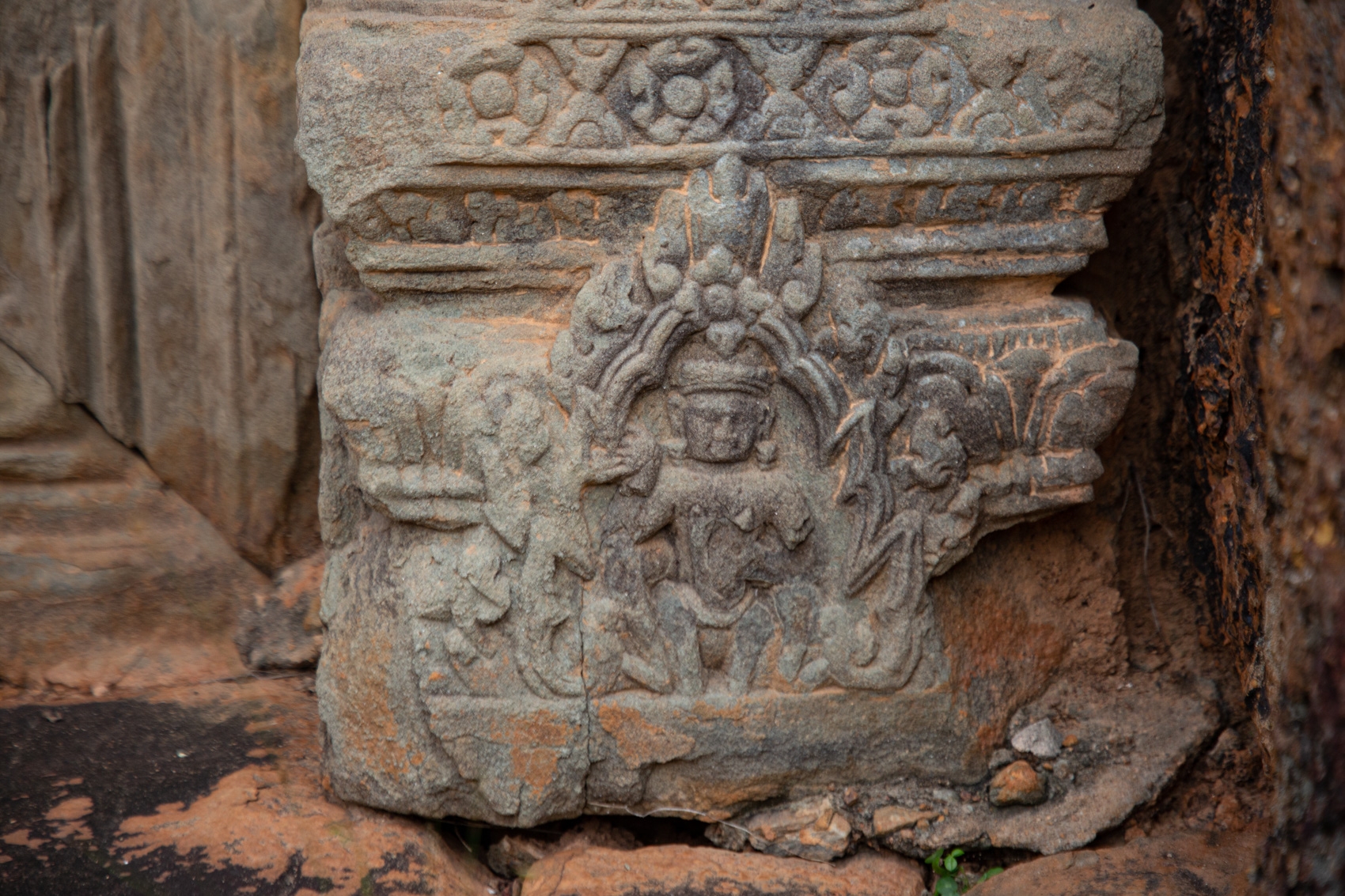
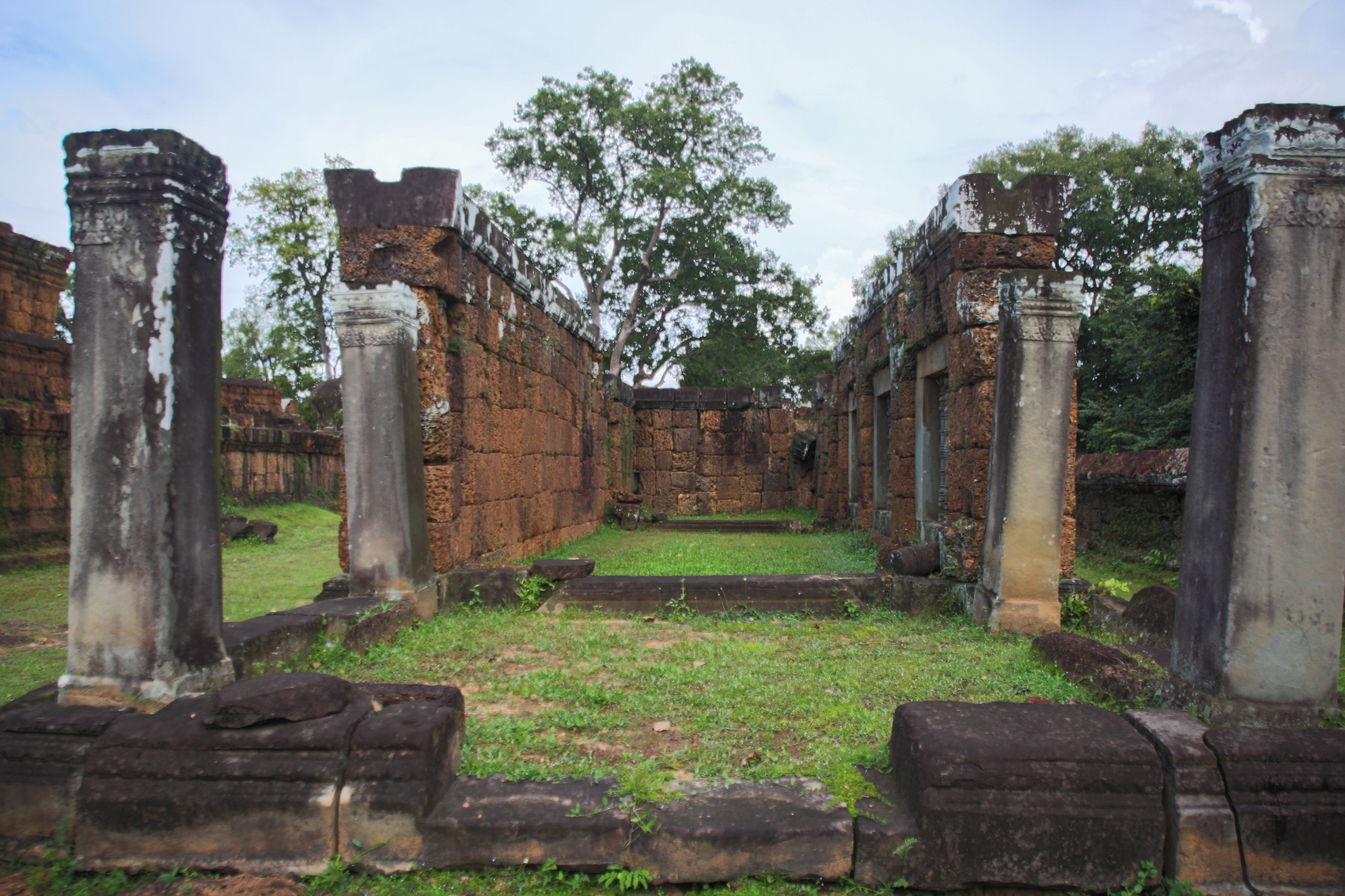
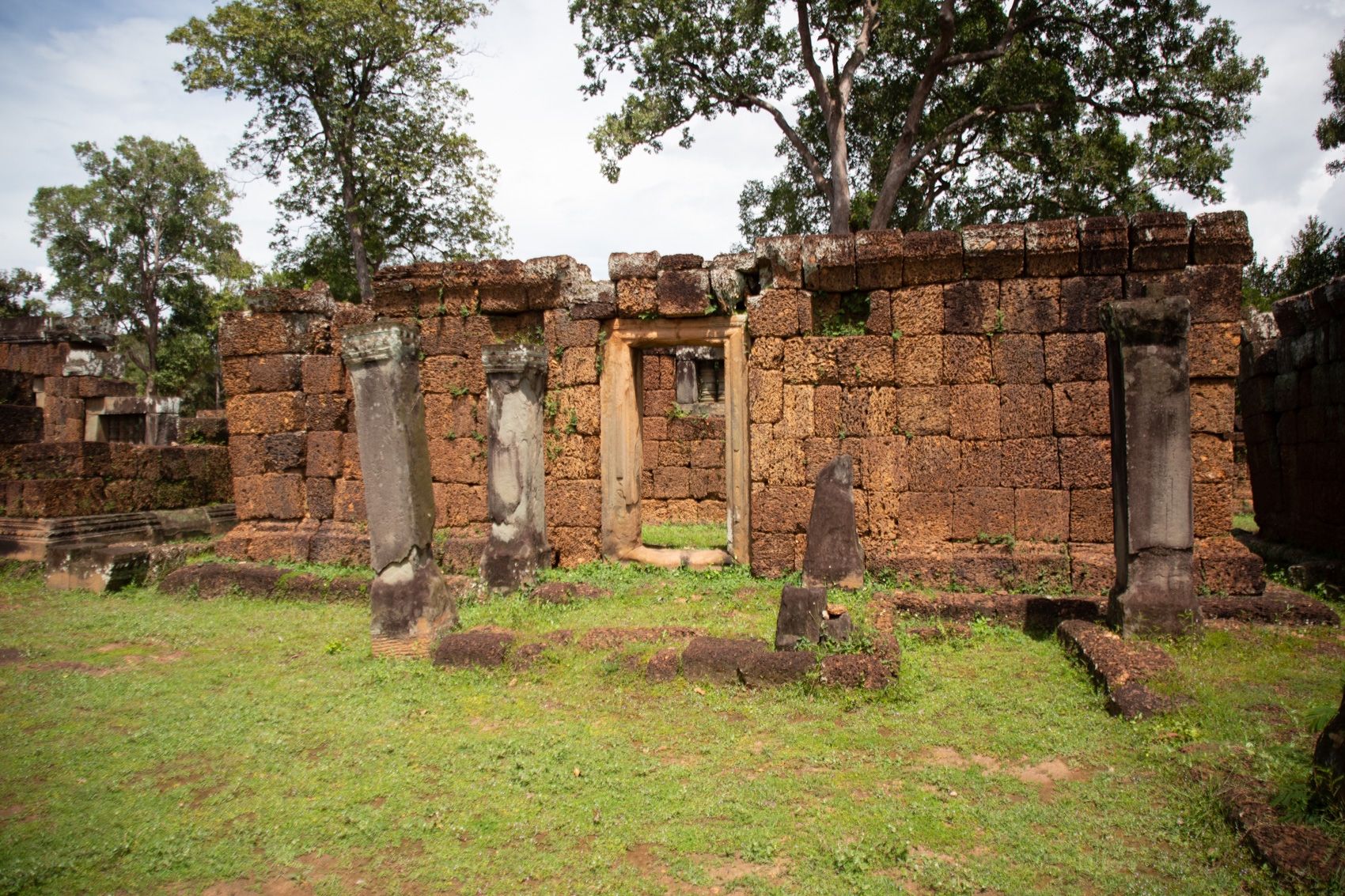
Historical Images
Images property of EFEO and the whole collection can be viewed at Fonds Cambodge
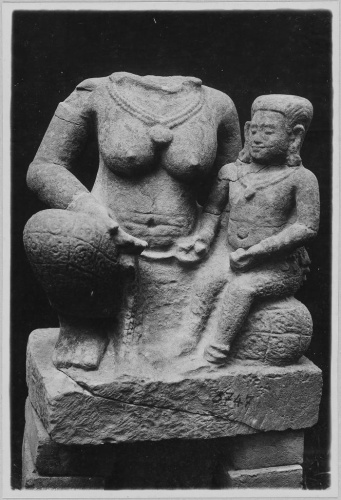
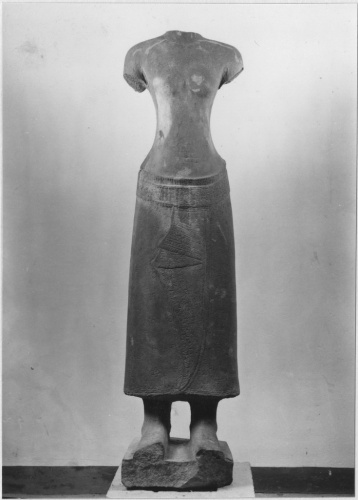
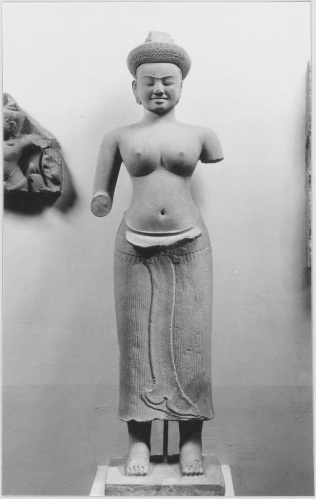
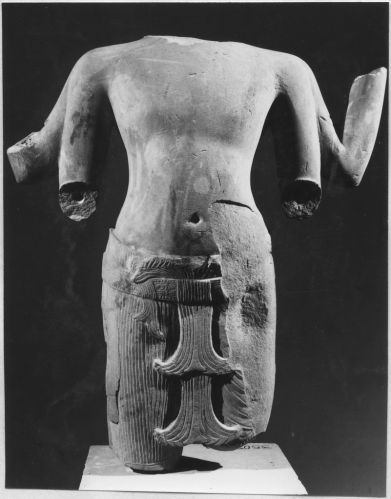
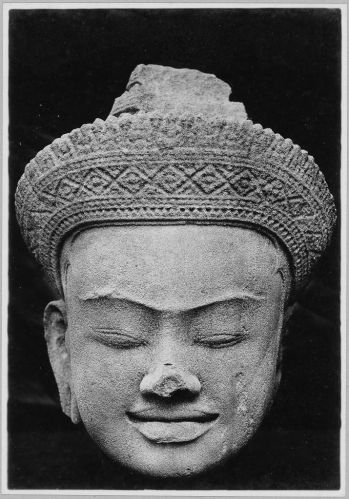
Diademed female deity head
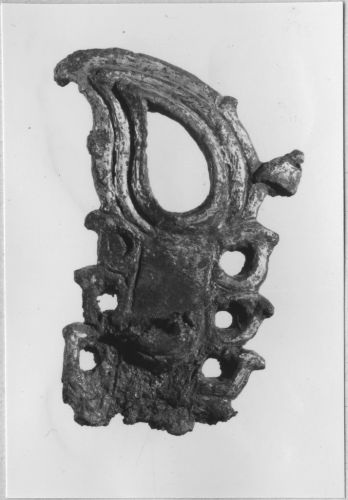
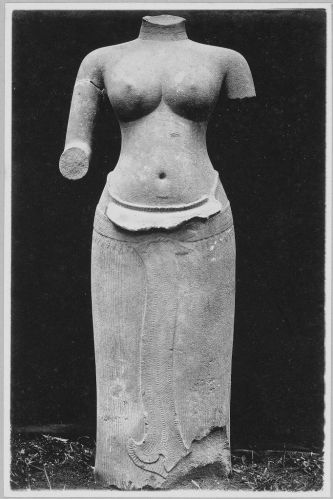
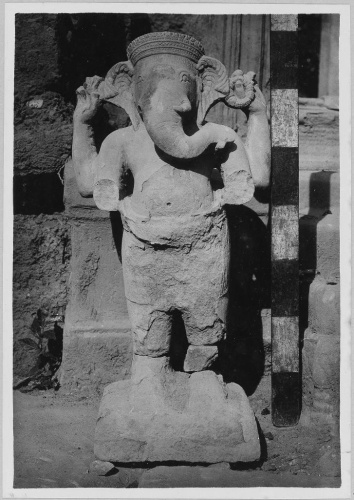
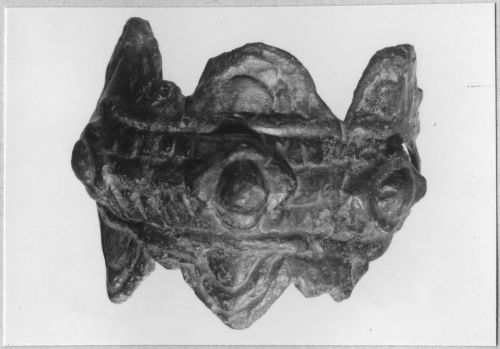
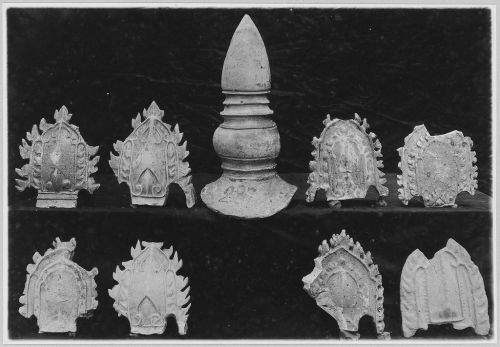
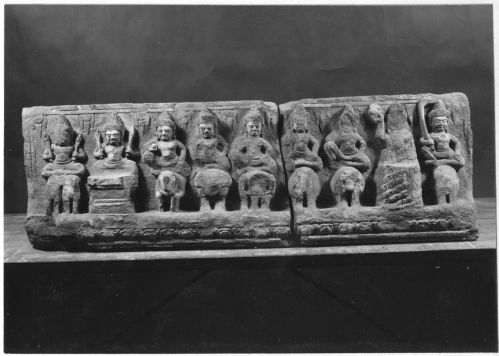
Inscriptions
- K. 528 – stele (now in PPNM) – 57 + 58 lines of Sanskrit – Finot 1925, p. 309; The East Mebon Stele Inscription from Angkor (K. 528) : A Sanskrit Eulogy of the tenth-century Khmer Sovereign Rājendravarman, Goodall 2022
- K. 867 – stele fragment – 6 lines of Khmer – IC VI, p. 152
References and further reading
- BIARD Sophie, Interpreting iconography at East Mebon, 2021 [PDF]
- Finot Louis. Inscriptions d’Ankor. In: Bulletin de l’Ecole française d’Extrême-Orient. Tome 25, 1925. pp. 289-409.
Map
Site Info
- Site Name: Mebon Oriental Khmer Name: មេបុណ្យខាងកើត
- Reference ID: HA11690 | Last Update: July 20th, 2021
- Other Names: Eastern Mebon, ប្រាសាទមេបុណ្យខាងកើត
- Date/Era: 10th Century
- Tags/Group: 10th Century, Angkor, Angkor Grand Circuit, Map: Angkor's Top 30 Temples & Ancient Sites, Map: Top 100 Temples & Ancient Sites (Siem Reap), Râjendravarman, Temples
- Location: Siem Reap Province > Krong Siem Reab > Sangkat Nokor Thum > Preah Dak Village
- MoCFA ID: 406
- IK Number: 531
- Inscription Number/s: K. 528, 867

